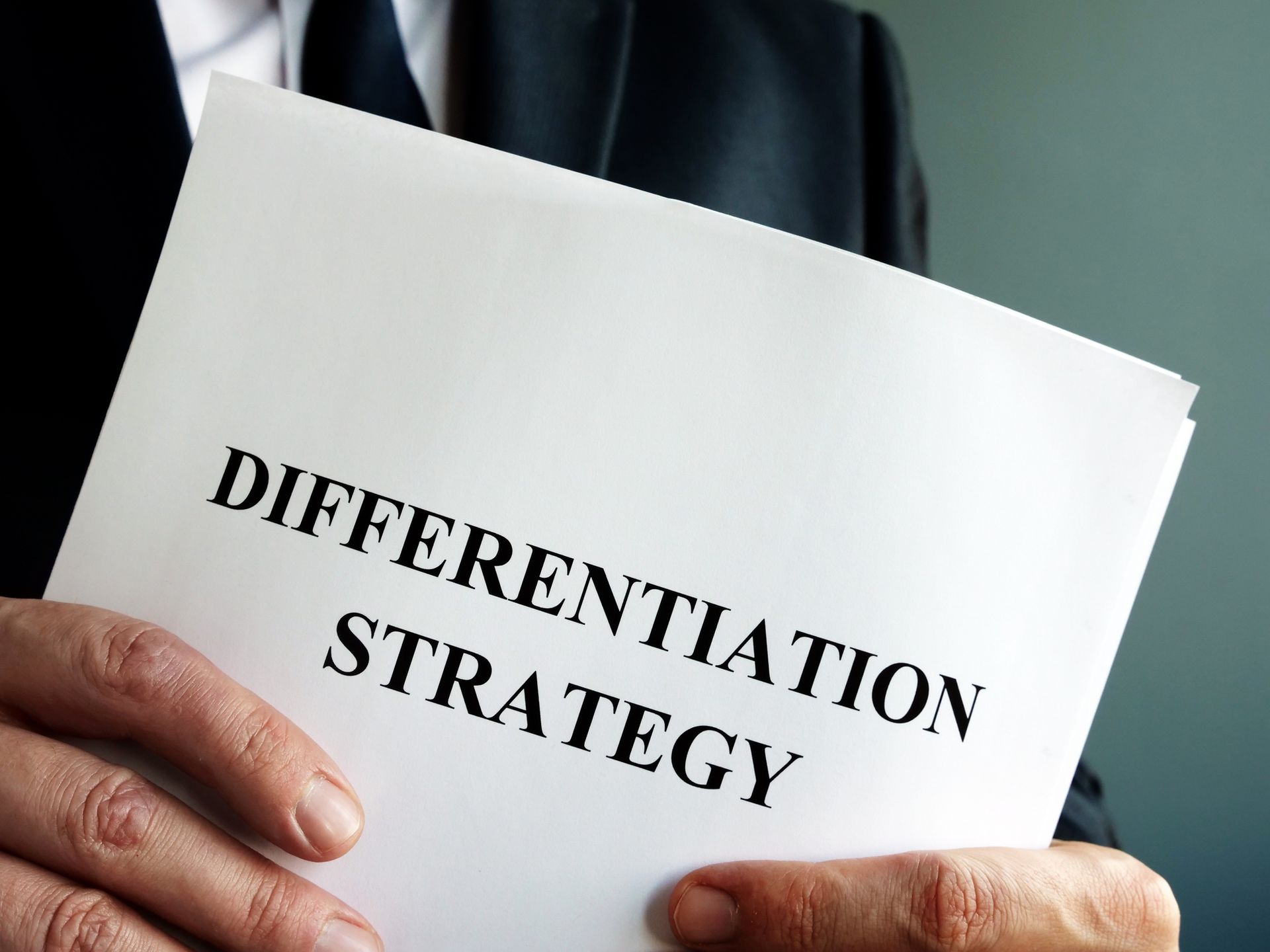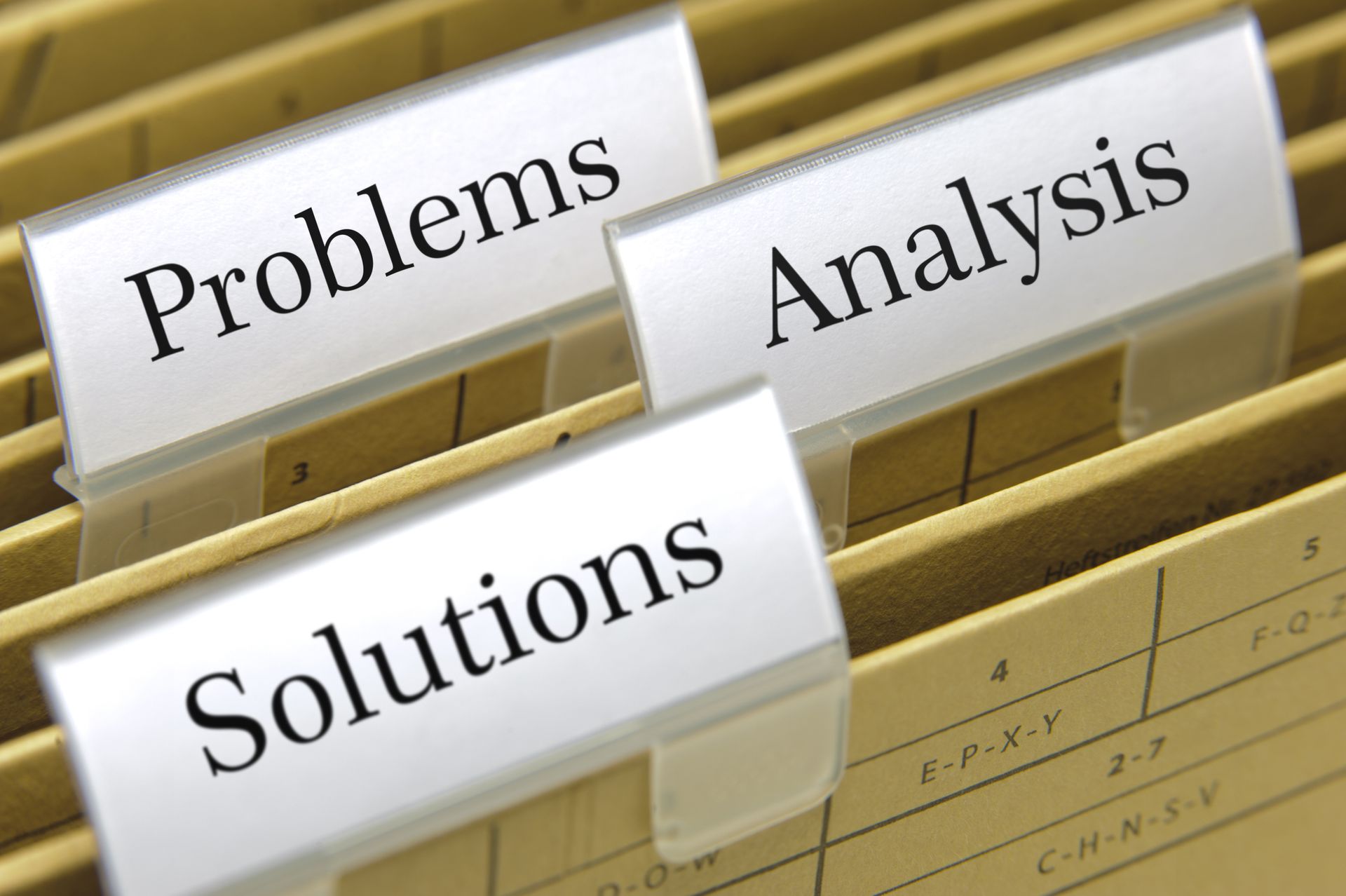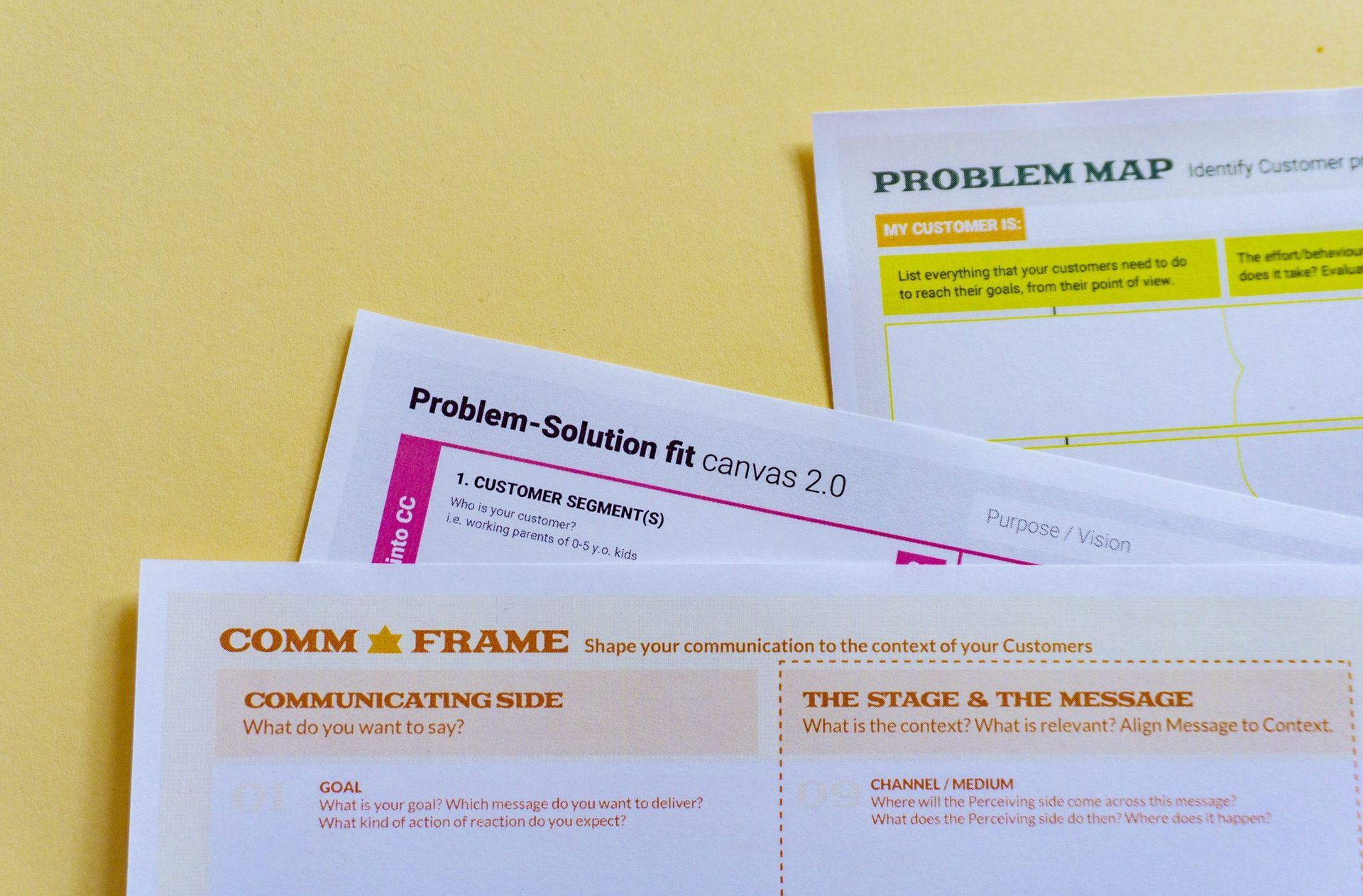ACADEMY KNOWLEDGE BASE

By Jordan Kelly
•
September 13, 2025
‘Pitch’ – a buzz word borrowed from the advertising industry – is a term some of the “cooler types” in other industries like to throw around . It’s also close to my most despised term. Why? Ask any customer, client or professional tender evaluator if they like to be “pitched” to . . . and you’ll be treated to a range of impassioned responses with a clear central theme: Just like you, clients and procurement professionals don’t like to be “sold” (what they like, is to think they are making balanced, well-informed procurement decisions). They certainly don’t relish being forced to listen to a salesy, supplier-centric, “push” monologue (or to read the written equivalent). And that, of course, is exactly what a “pitch” is. Even the use of the word “pitch” is an expression of self-centred thinking. It’s an indication of the place its user is coming from: A short-term-focused, whatever-we-have-to-do-or-say-to-bag-this-deal mindset. (Which is bad enough in its own right, if you value successful incumbency and/or repeat business.) Most “bid strategy” workshops I’ve sat in on (i.e. not as the facilitator) are little more than pitch development sessions. The participants – and worse still, often also the facilitator or leader – bangs on about “win themes” and “silver bullets” . . . and other concepts that frequently, at root, are actually more about the bidder than the client. The Pitchfest Litmus Test Let me give you a litmus test to use, in a bid strategy workshop, that will hold up a mirror to the process and indicate to you whether you’re developing a genuinely client-centric bid strategy, or a self-centric pitchfest of “things you can say” in your proposal. Here it is: Has anybody made an utterance to the effect of, “coming up” with (some form of) a “value proposition” (which, in reality, is little different to a “win theme” or “silver bullet”)? Or, in fact, “coming up” with anything? What will ring the client’s bell most vigorously is not your “win theme”, “silver bullet”, “value proposition” or anything else you “come up with” to say. What will really capture them is your demonstration of a deep and detailed understanding of their world, their organisation and the circumstances surrounding their intended procurement . . . followed by your identification of their related challenges and priorities, and then the alignment of a success-critical competitive strength on your part. A long way from a “pitch”, isn’t it? A Mind Picture to Help You Avoid Temptation Let me implant a vision in your mind that should help you – as an individual of dignity – develop a healthy degree of “cringe factor” for the whole notion of a “pitch”. I once witnessed an advertising agency giving its pitch for a potential new account. (Admittedly, this was quite some years ago, before the proliferation of easy-to-use digital media technologies.) Three women in suits stood side by side in front of a small group of senior executives and marketing personnel from the prospective client organisation. Each held up a “storyboard”. Some “happy” music started playing. With over-exaggerated grins, the three women each started bopping up and down to a jingle on a ghetto blaster while wobbling their respective storyboards, Rolf Harris-style. And then came the truly unthinkable: They started singing. That should embarrass you, just reading it. Keep that picture in mind next time you suspect you may be entering into “pitch” territory – in your bid strategy workshops or even in your language or in your thinking.

By Jordan Kelly
•
April 17, 2025
Here are four prime no-no’s when giving shortlistee presentations: 1. Don’t use lots of unexplained technical jargon to make yourself sound smart. ( NB: The same advice applies to your written submissions.) 2. Don’t let everyone know how important you are. 3. Don’t recite your presentation from memory or sound as though you are. 4. Don’t cram your slides with numerous text bullet points in multiple fonts. Source: Chris Anderson’s ‘How to Give a Killer Presentation’, Harvard Business Review.

By Jordan Kelly
•
April 16, 2025
If you’re a senior executive responsible for setting – and overseeing the attainment of – your enterprise’s corporate growth goals, I have a question for you: How informed are you on the individual contracts that comprise the overall total of your organisation’s business-under-pursuit? How certain are you that the priorities underpinning the prioritisation of current […]

By Jordan Kelly
•
March 27, 2025
How do you slash the cost of bidding without bringing about a correspondent drop in submission quality? I’m about to present you with nine suggestions which, when implemented, will not only save you time and resources (read: budget) but will, in fact, streamline the process and produce a superior end product. Fair warning: Some are […]

By Jordan Kelly
•
March 19, 2025
One particularly common mistake I see made from the level of bid operations right through to senior management, is to confuse strategy with tactics. These are not interchangeable terms and they’re certainly not interchangeable concepts: Strategy informs tactics. Two different things. Two different functions. Two different processes. A basic, high-level definition of “strategy” might be: […]

By Jordan Kelly
•
March 2, 2025
Whilst the first and most immediately obvious step in improving poor articulation performance in a submission is to subject it to a rigorous editing process, there’s almost always a greater issue at play. That issue is the largely non-client-specific (at least, not convincingly specific) and generally “same, same” nature of the content . . . the supplier-focused “brochureware” that results from an unclear, uncertain or absent bid strategy. Or an insufficiently documented one. In almost every bidding enterprise I’ve worked with, writers have previously had to either rely on little more than workshop notes, together with existing generic content, to inform their response sections. For the most part, they’re forced to interpret and piece together in their own minds, the intended underpinning strategy and guiding themes supposedly resulting from planning sessions. In many cases, they’re faced with making up the content themselves without any guidance. It’s critical to recognise that producing a client-focused submission requires more than a simple emphasis on writing techniques and editing processes (e.g. flipping sentences around to commence with the client organisation’s name versus the bidder’s). If writers are given a comprehensive and user-friendly bid strategy blueprint to guide them, and along the way their outputs are nurtured by the appointed strategist within the group, their writing should, by default, adequately convey the bid strategy. And it should do so in a client-focused manner.

By Jordan Kelly
•
March 2, 2025
One of the less tangible, less immediately “visible” reasons for the loss of either a new-business pursuit, or an existing account, is a misalignment between organisational cultures. I’ve seen this happen on a number of occasions. One that springs colorfully to mind involved an SME client, quite some years ago: A sizeable print management firm was pursuing an account with the Australian operations of a large consumer goods multinational, with requirements that included high-volume direct mail campaign activity. The business development operative (“BD”) on this account had, for over a year, been aggressively endeavouring to win over the account from a competitor. Each time he’d gotten close to potentially consummating the deal, however, this potential client appeared to back off. Finally, he’d moved the relationship to the stage where a serious, formal proposal had been requested of him . . . the point at which he contacted me. When the Client’s Psychology Differs from Yours Conducting a detailed interview with this BD to understand the client’s psychology, it became clear to me that the BD’s aggressive and gung ho culture (which was also that of his company at large) was at complete loggerheads with the far softer, more relationship-respecting modus operandi of the client organisation. It didn’t take me long to work out from an analysis of the historical dialogue that there was, in fact, no lack of interest in the service and other aspects of this provider’s offer. Rather, there was pushback based on this BD’s manner and approach. He didn’t see it. Not only was he oblivious to it, he advised me that when I’d produced the proposal he was tasking me with, he intended to brandish it forcefully before the client representative with an ultimatum that she make a decision forthwith or . . . well, the rest of the intended statement was quite colorful (something to the effect of "shit or get off the pot"). With some considerable persuasive effort, I managed to convince him not to take this stance. I suggested that, instead, he recognise the nature of the corporate culture he was dealing with and take a far more empathetic approach. Long story short: A little bit of “empathy” and a couple of weeks’ more patience on the BD’s part, and he bagged a new, $20m per annum account for his employer. The moral of the story is this: The Client Knows . . . Either Consciously or Subconsciously When pursuing any type of account, project, implementation, or other form of deal that requires your people to work closely with the client organisation, take culture seriously. Even if the potential client doesn’t consciously recognise the reason for any resistance on their own part, he or she will “at a gut level” detect cultural misalignment. And even if you do win the deal, a poor cultural match has the potential to be, at best, a constant challenge in the ensuing relationship. At worst, it has the potential to create disaster. Here are five steps you can take in the event that you sense a potential cultural mismatch: 5 Steps for Averting or Dealing with A Cultural Mismatch Determine the degree of mis-match. Determine whether or not this has, or may, cause mis-alignment in more tangible ways as the relationship progresses. If, given your consideration of these facts, you decide to press ahead, map out a strategy for addressing and to the greatest extent possible overcoming the mis-match. Where possible, make the elements of your plan measurable by, for example, formulating strategic Key Performance Indicators (KPIs). Recognise that this will be an issue that needs constant monitoring throughout the life of the project or contract. Be upfront with the client about your plans and efforts. Again, you’re probably only kidding yourself if you think the client organisation is unaware of the cultural mis-alignment. Far better that you demonstrate your own awareness, and your proactive approach to striving for a successful working relationship.

By Jordan Kelly
•
March 2, 2025
Have you ever had the demoralising experience of being engaged in a phone conversation with someone who suddenly starts shuffling papers, filing or (worse still) reading and responding to an unrelated email? If you were sufficiently forward as to protest and the other party sufficiently ignorant as to persist with his or her other activity, he or she would no doubt have given you the “I can multi-task” line. But I’ll wager it was obvious to you that, at best, your “multi-tasking” conversation partner was hearing only sporadic soundbytes of your end of the conversation. It’s a neurological fact that the brain can focus on only one matter at a time. It might flit between subjects, issues and conversations . . . but it can concentrate properly on only thing in any given moment. In his recent best-seller, ‘The Organized Mind’ , neuroscientist Daniel J. Levitin produces evidence to underscore how minimising the attention devoted to any one thing (the natural consequence of trying to spread one’s concentration amongst several things) dramatically decreases the quality of attention both to that and to everything else on that individual’s plate. Conversely, conceptual and critical thinking, along with insight and ingenuity, Levitin stresses, happen only when we screen out distractions and properly focus. Already, it’s pretty obvious how the nonsense practice of “multi-tasking” negatively impacts not only the quality of critical submissions, but every process that feeds into their production. As a bid strategist and coach, here are just two of the key processes that I regularly witness being adversely affected: Participants in strategy workshops insisting on reading and responding to emails and text messages . . . switching off to the thread of fast-moving, group conversations and thus forgo-ing their understanding of, and input into, the evolving bid strategy. Section authors and other writers interrupting their flow of writing inspiration to answer emails and their own incoming phone calls. (If professional authors feel the need to shut themselves away in order to place their full and uninterrupted focus on the piece they’re working on, why would someone who doesn’t write for a living feel they can produce a quality written output while “multi-tasking”?) Aligning with my cynicism over the concept of “multi-tasking” proficiency, Stanford University researchers have found that “multi-taskers” (a) have difficulty organising their thoughts and filtering out irrelevant information, and (b) are actually slower at them, with their switching from one task to another (versus those who stay focused on one activity until it is satisfactorily completed). Potentially, there’s also evidence that multi-tasking lowers one’s IQ. A University of London study found participants who multi-tasked during cognitive tasks experienced compromised IQ score declines similar to what might be expected had those individuals smoked marijuana or stayed up all night. Coming back to bidding. When you’re otherwise throwing everything at a must-win, high-stakes bid, why go at it with diffused mental energy? To do so argues with every claim you make – to yourself, to your bid team colleagues, and to the potential client – as to the importance of victory.

By Jordan Kelly
•
March 2, 2025
When you’re under the pump with a short submission timeframe, your best default strategy for getting a top-notch bid out the door in good time and with the least stress possible is to “go with the current” in terms of people’s natural talents. You can coach people in their areas of weakness to a reasonable degree, but rarely will they be great in those particular aspects of bid production. The fact is, people generally gravitate back to the aspects in which they naturally excel and endeavour to avoid those in which they don’t. And when a bid manager is under the pump, the cold, hard fact of the matter is that he or she simply doesn’t have the time to coach or cajole. Identify the Priority Skills Needed The first step is to accurately identify the priority skills required for each part of the submission and the process, giving careful consideration to which individuals possess these. It’s also smart to consider personality traits or work habits that stand to either propel or impede progress towards the finish line. Really think about each person and who (rather than what ) they are. ‘Day job’ position titles can be misleading in the context of a bid. Often, the strengths and weaknesses you’d assume of an individual in a particular role just don’t import across into a bid team environment in the way you’d expect them to. I’ll cite as a case study, a small, component operation of a larger organisation with which I had been working. One of the operation’s few "white collar" staff members (aside from the GM) was assigned as bid manager. It was a pressure cooker timeframe and, a few days after kick-off, the schedule was already floundering. In short, this assumedly "natural" bid manager appointment was a disastrous choice. As it happened, fate graciously stepped in and saw that individual suddenly pulled off onto another contract elsewhere. Because I was working with the team by remote control, there was little choice but for the Construction Manager to take over the bid management role. ‘Humble Hammer Swinger’ Saves the Day Fate dealt the bid a lucky hand that day. The previous appointee’s weakness was the Construction Manager’s strength. This "humble hammer swinger" (his own words) made a brilliant bid manager. He was organised, efficient, exercised total diligence in keeping his own commitments, and had an affable but effective way of holding others to their's. His humility came in handy, too: If he could see anything going off the rails, he was quick to pick up the phone for advice. The fact that he couldn’t string two coherent sentences together on paper turned out to be inconsequential. When the now-former bid manager returned to the team, he gravitated directly towards - and excelled at – the bid’s writing tasks, taking on those that had, in fact, been assigned to the Construction Manager. So, by complete accident, we ended up with a highly functional bid team and a top-notch bid out the door in what, for that particular operation, was apparently record time. To re-emphasise the moral of the story: When time is unavoidably tight, ensure the highest quality and the least stress by getting to know your "human resources" and letting each wear the cap that most comfortably fits him or her.

By Jordan Kelly
•
March 2, 2025
This article is a direct follow-on from, ‘The 11 Stages of Competent & Comprehensive Pre-Probity Bid Management’. Those stages that should be conducted post -release of the RFP are: Stage One : Hold a session to ‘reality check’ and finalise the Strategy Document against Expression of Interest or Request for Proposal content and requirements. It is critical that all participants undertake – prior to this session – their own personal, detailed reading of the market call documentation. Without this prior study of the document, the first few hours of the session will be soaked up by this exercise or - if the session proceeds without participants having read the EOI or RFP - the only contributors of value to the session will be those whom have read it. The purpose of the session is to complete and “reality check” the pre-probity-formulated interim strategy document against the client organisation’s actual information and requirements. Where significant additions or departures are identified, a revised Strategy Document must be issued. (It can reasonably be assumed that, most times, a revised Strategy Document will be necessary.) Stage Two : Submit the Bid Strategy Document to senior management for approval. This is a critical step in ensuring that the underlying strategy and the content of a proposed end submission is not rejected, by senior executives, at the eleventh hour. Stage Three : Confirm or modify brief to designers based on above. With reference to Stage 11: Formulate brief for designers (see ‘The 11 Stages of Competent & Comprehensive Pre-Probity Bid Management '', this earlier “heads up” preparatory brief should now be revised/refined/supplemented and formalised). Stage Four : The Strategy Document should be issued to authors, and a writing coaching session should be held for those authors (including subject matter experts) contributing to each submission section. A bid-specific coaching session is a valuable exercise, to identify the degree of writing competence possessed by each contributor and apportion any assistance resources early and appropriately. Stage Five : Early-Stage Review. The Bid Strategist, along with whomever the Bid Manager has appointed as the editor of the end submission, should review each contributor’s first few paragraphs / first page, to determine whether he or she is “on the right track” with his or her copy. This allows for the provision of direction and any material input in the early stages, as opposed to the latter stages (which creates editing and re-writing bottlenecks dangerously close to the submission deadline). Stage Six : Strategic diagrammatic support identified and briefs given. Opportunities to support/supplement the written content with diagrammatic and other visual content should be identified, and the relevant subject matter experts pulled in to brief the design team (to whom preliminary relevant copy sections should be provided). Stage Seven : Subsequent series of reviews. Upload of first and subsequent drafts (allow for at least five ) by the date identified jointly by the Bid Strategist, Bid Manager and editor. The number and timeframes for these reviews should be realistic to accommodate the number of Bid Manager/author exchanges that will be necessary to bring copy to Final. Take into consideration that: a) Where contributors are not professional writers, considerable redrafting and/or editing will likely be necessary. b) Where professional writers are producing the content, these writers are unlikely to also be subject matter experts, and revisions to the substance and detail of their copy will likely be necessary when reviewed by the topic experts. c) Diagrammatic and other visual supplementation should be submitted back to the subject matter experts who briefed the design team. As above, this must be done with plenty of time to allow for several rounds of correctional iterations. Stage Eight : The Bid Manager should make a final review of content prior to tabling to the Pursuit Leader and Bid Strategist. The Bid Manager must ensure the draft submission is technologically sound, as well as comprehensive, in terms of strategy. If there are significant shortfalls in these areas, the Bid Manager should return the copy to the author for correction and/or completion. It should then be submitted back to the Bid Manager by the author. After the Bid Manager is satisfied with the soundness and comprehensiveness of the draft in question, the Pursuit Leader and Bid Strategist should be brought back into the review process. For quality control and consistency purposes, all copy (e.g. case studies, CVs, appendices) – within reason – should be reviewed by the Pursuit Leader and the Bid Strategist. Stage Nine : Production of Executive Summary (i.e. towards end of above process, when a more detailed and authoritative picture of the content is known). Writing a submission’s Executive Summary before the production of the bulk of its content, is illogical. An Executive Summary should be precisely that i.e. a Summary . Unfortunately, many (if not, most) bidders treat this as either a covering letter or a preamble sales piece. Stage Ten : Graphic production and checking. Review of the various iterations of the graphic design should follow the same basic procedural format as for the review of the written content. Stage Eleven : Senior management review/comment. The bid strategy document should be provided to any reviewing senior management who were not privy to it in the earlier stages, and in plenty of time for each to have read and absorbed it before receiving the proposed end submission for approval. Meantime, as a refresher, a summarised, key point version of the strategy document should be provided to those whom have already been provided with the fuller version. Stage Twelve : Final adjustment and editing to professionally blend in management additions and alterations. Do not underestimate the potential volume of revisions, additions and subtractions senior management has a propensity to request – especially if the bid involves joint venture partners and, thus, executives from several organisations (who may not be in agreement with each other on matters of detail). Stage Thirteen : Insertion of copy into page design framework. The Pursuit Leader, Bid Strategist and Bid Manager overview the intended final design production, quality-control-checking at the very finest level of detail, before delivery to prospective client organisation. See: ‘The 11 Stages of Competent & Comprehensive Pre-Probity Bid Management’ .

By Jordan Kelly
•
March 2, 2025
Bidding for business in offshore markets? Take market reconnaissance very seriously if you wish to be taken seriously. The adage “preparation is the key to success” is nowhere so relevant as in a bid to an export customer or client (or in any form of export market entry endeavour). While research and a detailed understanding of the customer is, of course, what underpins a win in a tender, proposal or any form of bid in any market, cross-cultural differences alone render it imperative when bidding in an export environment. While, for example, you’ll get the opportunity to ask questions or seek clarifications to tender documentation, it’s no substitute for the different, far deeper level of understanding a bidder receives when investigating the issue in question within the local industry and commercial environment. In fact, as in any bidding process for a big-ticket procurement, once the opportunity is formally announced to the marketplace, either the front-runners are already well-established, or the vast amount of necessary knowledge and understanding make it a case of “too little, too late” if you’ve left it until then to start your research. And you don’t want to waste your resources on a bidding process in which you’re just there to make up the numbers. The bottom line is: Unless you’ve taken the time to research the customer and the market, you’re wasting your time entering into a formal submission process. And nowhere more so than in an export market bid. Your most basic starting point in a competent investigative process is to understand: • The politics and culture of the organisation to which you’re tabling your bid. (In this regard, it’s almost always advantageous to identify a competent and committed local partner.) • The customer or client organisation’s market demographic, where they’re positioned within their overall commercial and competitive environment, and the characteristics of the groups they sell to. • The influencing forces on buyers. • (If you’re dealing with retail) What the retail chain looks like and the most prevalent types of pull-through marketing. • Your likely competition (both local and overseas) and their relevant strengths and weaknesses. Export Bids Aren’t Won By Remote Control On this latter note, if you haven’t done your homework before a formal market call is made, you’re up against local companies that most assuredly will have. Doing your research is part of making it as easy for customers to do business with you as it is for them to do business with their local product suppliers or service providers. And on that note, it’s about being real rather than being carried along by a romantic vision. Every now and then there’s a company that’s in the right place at the right time with exactly the right offer. But it’s rare, and you can’t base a serious, broader export initiative on such flukes. If you don’t have an up-to-date, first-hand understanding of the landscape, and thus can’t convey that in your formal bids, tenders or proposals, bidding into the export market is a hard way to try to win business. And, in most instances, the best (if not the only) way to attain that understanding is to pound the pavement, or to work with someone who will do so on your behalf.

By Jordan Kelly
•
March 2, 2025
Prominent social commentator of the Victorian era, John Ruskin, famously observed: "There is hardly anything in the world that some man cannot make a little worse and sell a little cheaper, and the people who consider price only are this man’s lawful prey." Ruskin’s words are nowhere more applicable than in the world of high-value tenders. With rarely an exception, those organisations that issue market calls with the sole or primary objective of sparking price competition (and getting a cut-throat deal), inevitably pay the price in some other form. That’s not news. But it doesn’t apply to all potential customer organisations . . . and the ones to which it doesn’t apply are, obviously, the ones smart transport operators want to be targeting. The trick is to give those organisations a solid reason – other than cost – to choose you . Differentiating in A Highly Commoditised Space You know what’s coming, right? You guessed it: The predictable admonition to differentiate your company and your offering on something other than price. That’s all well and good, but let’s take, for example, my readers from the transport sector (and other highly commoditised industries): When the competition offers exactly what you do and you’ve done everything you can – exactly how do you differentiate? The answer: You think from the client’s head. The point of self-focus from which the vast majority of bidders come when responding to an Expression of Interest (EOI), Request for Tender (RFT) or Proposal (RFP) renders it hard to see what’s most meaningful to the client. Sure, what the client wants is articulated in the selection criteria . . . but, in some industries particularly, these criteria can be pretty bald and (often, if the client documentation is template-based) not nearly as contract-specific as they could be. So . . . you have to dig deeper . Way below surface level. A Courageous Pursuit Recently I conducted a series of bid strategy sessions for a rapidly growing mid-tier organisation in a somewhat courageous pursuit for a certain type of contract with a very large mining consortium. After leading the senior management and the appointed bid team through a comprehensive and in-depth analysis of the competitive landscape, the surprised and humbled team made the collective observation that, “We’re not anything special after all. We don’t do anything more or anything different than anyone else.” I assured them they did. They had done something very different indeed by conducting a series of detailed, in-depth analyses of their prospective client’s world, of its priorities, and of their own capabilities in the context of their new-found knowledge. There’s A Tangible Value to A Client-Focused Bid That made them immeasurably different. Unlike their competition which would undoubtedly present the same old template-style, supplier-centric dross as everyone else, they would – through a now- deep understanding of their client – produce a bid that clearly demonstrated a superior knowledge of that organisation’s operating environment and challenges. Critically, my client would demonstrate that it had formulated its service proposal in direct (and comforting) accordance with these. A response of that quality offers a distinct and very real value to the procuring organisation . . . a value in terms of risk minimisation, frustration avoidance, value maximisation , and general peace of mind . And all of these, in turn, ultimately have a monetary value – especially in a long-term service provision contract.

By Jordan Kelly
•
March 2, 2025
"You’ve proposed a ‘sledgehammer’ solution and we are a ‘walnut’ customer." Feedback of this nature is not uncommon in ICT bid debriefs, by my observation. And it’s just one example of the many different ways in which a proposed “solution” can be totally out of alignment with a client organisation’s actual needs. Taking the above example, how does it come about that a client organisation finds a huge solution put forth to it, for a comparatively small need? Often, it results from the vendor sales team’s excitement over their company’s latest technology/product, and their un-resisted temptation to promote it as the solution to all problems, both great and small. A Lack of Questioning Know-How Sometimes, however, it’s a lack of know-how, when it comes to mapping out a process for digging deeply into the client’s “big picture”. Let’s take a look at the dangers of not knowing your prospective client’s world as intimately as you perhaps think you do. Here’s a telling comment made to me by a client of one of my own clients some years ago. I’d been digging around (in a proactive proposal scenario i.e. one not subject to probity restrictions) to identify the reason for the significant amount of push-back the BD team sensed during interactions with the organisation in question: “(Vendor) is used to dealing with organisations with daily throughputs equivalent to our monthly throughput volume. We’re not there yet. They want our business but they’re in auto-pilot mode when they converse with us. They don’t get us or where we’re at. If they did, they wouldn’t be proposing this big thing.” The vendor’s reputation was being compromised by this situation: Pushing what the prospect saw as an overkill solution was creating the distinct impression that that organisation was seen simply as a “great big cash cow”. Worse still, one that didn’t know any better. If, for example, your client is an organisation with a call centre, does your client consider its needs – in the context of its own industry norm – relatively simplistic? Or, in fact, quite complex? Or somewhere in between? Frame the Question from the Client’s Perspective You need to ask the question from the client’s perspective . And then you need to understand precisely why the client considers that the organisation’s need sits at this level of simplicity or complexity. And within that level of simplicity or complexity, what are the client organisation’s specific priorities and why? What aspects of their business or their customers’ behaviour dictates that these are the priorities? And what are the risk factors associated with these priorities not being recognised? And, coming back to simplicity (or complexity), are their hidden layers of complexity required to actually achieve the simplicity (i.e. in a risk-free manner) that the client desires? Perhaps what the client desires more than anything is simplicity of implementation and operation . . . but is overlooking the fact that there is necessary complexity involved in creating that simplicity? Good Questions Catalyse A Deep & Meaningful Relationship The point is, there’s a whole line of investigation that needs to be conducted, and this is the type of question that can catalyse a deeper and more meaningful conversation between vendor and client. It’s the type of questioning that lets the client know you’re not just trying to apply your newly released technology or other flavour-of-the-quarter solution to that organisation’s needs or problems, regardless of whether it really is the best, most client-centrically thought-through option. Questions like these show that you see your role as understanding specific problems and solving them, or understanding specific desires and fulfilling them . . . as opposed to simply spruiking your software (or other form of “solution”). The key is for you, the vendor, to enable the customer – and to do so in the most proficient, cost-effective, adoptable, adaptable and results-oriented fashion. And the only way to be sure that what you propose will do that – in the words of the afore-mentioned end-client – is to: “Get involved and not just talk the talk. Interact with us and immerse yourself in ‘a day in the life of’. Invest some time looking at the world through our eyes and, more specifically, through the eyes of those in our organisation who have to pick up your technology and kick goals with it.”

By Jordan Kelly
•
March 2, 2025
If you’re a provider of Facilities Management, accommodation or related services to the resources sector, here’s some advice from an FM tender evaluator who’s worked with numerous end-clients in both public and private sectors. Martin Leitch reckons the advice he imparted for this article will propel you out ahead of the pack when bidding for remote camp services contracts. In his role as a Facilities Management consultant, he’s worked with clients to ensure their FM strategies contribute to bottom-line performance – increasingly a “hot button” procurement issue in this space. He’s also served on several dozen FM tender evaluation panels. What’s the Relevance to Remote Services Bidders? He says that in a Facilities Management bidding race – all else being equal – the bidder most likely to be awarded a key, long-term contract (the nature of which we’re currently seeing in the remote accommodation / camp management space) is the one whose proposed solution directly supports the client’s broader corporate objectives. The starting point for any bidder wanting to take this “value added” approach, he advises, is to first demonstrate a genuine and detailed understanding of those broader objectives – both at the overarching corporate level and at the level of the client’s key business / operating divisions. Further on from that, the bidder must understand the critical interplay between the client’s various business units and their individual strategies. It’s only from there, he says, that a bidder can formulate a solution to specifically underpin the attainment of those goals and support those component strategies. In contrast to this, Leitch says, the average facilities or accommodation management services provider (be that camp accommodation in the most holistic sense, or any component service thereof) will likely limit its focus to the objectives and issues that relate directly to that service. Winner Will Translate Corporate Strategy into FM Plan (Losers Won’t) If you’re about to throw your hat in the ring for a substantial piece of action in the remote accommodation (and/or related services space), this has direct implications for you. Following Leitch’s advice will not only inspire the evaluation panel’s confidence, but – in the context of contract periods of unprecedented length – it will awaken the evaluators to the dangers inherent in selecting a bidder without the ability to understand, interpret and support these key corporate strategic objectives. These corporations, at the same time as becoming increasingly cost-conscious, also want to achieve stable, resilient, satisfied and happy work forces. A Bid Strategist’s Advice As a pursuit strategist and bid leader, I say that’s an indication of the various corporate objectives and individual departmental strategies you need to be all over. I’d be urging you to seek out information that will give you an understanding of the client’s current thinking and future directions in the HR space. Obviously, HR will have its own strategy in relation to the procurement and the management of remote workers . . . but, importantly, that strategy will include not only what’s happening now, if it’s a solid plan, it will also incorporate provision for considerations such as projected changes in worker demographic. In the context of a long-term contract, you need to be on top of this. And, when it comes to IT-related recommendations within your proposed solution, I’d be urging you to hotly avoid innovating in a vacuum. The practicalities of “good ideas” need assessed not only against the implications of implementation at a camp level, and not only against their compatibility with existing systems within the client organisation, but also within the context of future technology-related intentions. These are just two examples. By demonstrating this depth of research across all relevant divisions, you’d be showing yourself as an invaluable support player within the client’s “big picture” . . . a player that’s sufficiently agile to predict and respond to the resources client’s critically balanced and ever-changing business environment.

By Jordan Kelly
•
February 26, 2025
New Zealand Government Press Release, February 25, 2025 From the Office of the Minister for Building & Construction and Minister for Land Information, the Honorable Chris Penk The Public Works Act will undergo its most significant reform in nearly 50 years to help unleash an infrastructure boom, Land Information Minister Chris Penk has announced. “Removing barriers to make it faster and more affordable to build the homes Kiwis need, creating jobs through new projects and providing infrastructure to support better public services is a major part of the Government’s economic growth agenda,” Mr Penk says. “Complex regulations and inefficient processes are slowing down development, resulting in blown out budgets and added costs for taxpayers. “The Public Works Act is the mechanism which empowers us to acquire land for new infrastructure, while ensuring that fair compensation is provided to landowners – but it is no longer fit for purpose,” Mr Penk says. “A targeted review last year has found unnecessary duplication in the system, issues with outdated negotiation processes and disjointed government agency practices. “Right now, it takes up to a year on average to acquire land. If compulsory acquisition is required, the process generally takes up to two years, with at least another year tacked on if objections to the Environment Court are made. “We cannot afford this in the face of a productivity crisis and critical infrastructure deficit. A modernised Public Works Act will set the foundation for building better.” Extensive policy changes will be announced over coming weeks. The first tranche will: Delegate land acquisition responsibility : Empower government agencies like the New Zealand Transport Agency, which regularly use the Public Works Act, to enter into acquisition agreements with landowners. The Minister for Land Information will remain responsible for compulsory acquisition by the Crown. Enable collaboration between agencies : Allow government agencies to work together when acquiring land for connected public projects. Instead of each agency acquiring land separately, they will be able to co-ordinate acquisition of land as needed to make the process smoother. Enable relocation of infrastructure : Allow both the government and local authorities to acquire land when they need to move existing infrastructure (like powerlines or pipes) that are in the way of new public works. Refine the role of the Environment Court : Clarify the factors that the Environment Court can consider when reviewing objections to land acquisitions for public works, with a renewed focus on individual property rights, removing overlap with the Resource Management Act. Require mediation for compensation disputes : Require that parties try to resolve disputes over compensation through mediation or alternative dispute resolution before going to the Land Valuation Tribunal, to avoid lengthy court proceedings where possible. Allow Transpower to by-pass standard processes : Enable Transpower, the State-Owned Enterprise managing New Zealand’s power grid, to use the Public Works Act to acquire land by agreement. This would streamline their process for building energy infrastructure. “We have already announced that the Government will fix a discrepancy in the Public Works Act which undervalues Māori freehold land compared to other land types,” Mr Penk says. "Further improvements will be revealed as we prepare to introduce the Public Works Amendment Bill to Parliament around the middle of 2025.”

By Jordan Kelly
•
February 24, 2025
In a challenge workshop I held recently for a meeting of the senior marketing and sales personnel of a multi-national in the broader infrastructure and engineering space, I was told (I’m paraphrasing): “We struggle with converting client needs into end benefits. We’re good at communicating features, but not extrapolating these into project-relevant end-benefits.” Now, notwithstanding that the industry in question requires substantial use of technical specifications and other feature-related detail in submissions to its client audiences, the workshop participant that voiced that general concern was right on the money. These features still need to be converted to actual “benefits”. There’s a simple exercise for arriving at the benefits of a feature, without losing the necessary details of that feature, as required for the satisfaction of the client-side’s technical evaluators. Here’s the basic version: Throw up three columns onto your whiteboard. Head up the left-hand column, “Feature” – and articulate the key elements of the feature. Head up the middle column, “Relevance to Which Specific Project Objective?” . Head up the third column, “How It Helps to Achieve That Objective” . Again, this is just the basic version; more extrapolations are required to take this all the way through to any form of “win theme” contribution. But it’s a great start.

By Jordan Kelly
•
February 24, 2025
One of the less tangible, less immediately “visible” reasons for the loss of either a new-business pursuit, or an existing account, is a misalignment between organisational cultures. I’ve seen this happen on a number of occasions. One that springs colorfully to mind involved an SME client, quite some years ago. After a long and energetic courtship on his part, he’d moved the relationship to the stage where a serious, formal proposal had been requested of him . . . the point at which he contacted me. When the Client’s Psychology Differs from Yours Conducting a detailed interview with this BD to understand the client’s psychology, it became clear to me that the BD’s, and his print management company’s, aggressive and gung ho culture was at complete loggerheads with the far softer, more relationship-respecting modus operandi of the client organisation. It didn’t take me long to work out from an analysis of the historical dialogue that there was, in fact, no lack of interest in the service and other aspects of this provider’s offer. Rather, there was pushback based on this BD’s manner and approach. He didn’t see it. Not only was he oblivious to it, he advised me that when I’d produced the proposal he was tasking me with, he intended to brandish it forcefully before the client representative with an ultimatum that she make a decision forthwith or . . . well, the rest of the intended statement was quite colourful . . . like, err, "shit or get off the pot" . . . not a particularly relationship-nurturing statement. With some considerable persuasive effort, I managed to convince him not to take this stance. I suggested that, instead, he recognise the nature of the corporate culture he was dealing with and take a far more empathetic approach. Long story short: A little bit of “empathy” and a couple of weeks’ more patience on the BD’s part, and he bagged a new, $20m per annum account for his employer. The moral of the story is this: The Client Knows . . . Either Consciously or Subconsciously When pursuing any type of account, project, implementation, or other form of deal that requires your people to work closely with the client organisation, take culture seriously. Even if the potential client doesn’t consciously recognise the reason for any resistance on their part, he or she will “at a gut level” detect cultural misalignment. And even if you do win the deal, a poor cultural match has the potential to be, at best, a constant challenge in the ensuing relationship. At worst, it has the potential to create disaster. Here are five steps you can take in the event that you sense a potential cultural mismatch: 5 Steps for Averting or Dealing with A Cultural Mismatch Determine the degree of the mis-match. Minor . . . or real deal-breaking stuff? Determine whether or not this has, or may, cause mis-alignment in more tangible ways as the relationship progresses. If, given your consideration of these facts, you decide to press ahead, map out a strategy for addressing, and to the greatest extent possible overcoming, the mis-match. Where possible, make the elements of your plan measurable by, for example, formulating strategic Key Performance Indicators (KPIs). Recognise that this will be an issue that needs constant monitoring throughout the life of the project, contract or other form of commercial relationship. Be upfront with the client about your plans and efforts. Again, you’re probably only kidding yourself if you think the client organisation is unaware of the cultural mis-alignment. Far better that you demonstrate your own awareness, and your proactive approach to striving for a successful working relationship.

By Jordan Kelly
•
February 24, 2025
If – as pursuit leader or bid strategist – you haven’t checked off the following key preparatory measures before your bid writers put fingers to keyboard, you greatly risk falling into the standard default position i.e. section authors producing thinly-disguised "brochureware", and others producing what comes across as cut-and-pastes from a product or procedures manual. So ensure you can answer fully in the affirmative before you set your section authors loose on their tasks: Have you produced a comprehensive, high-readability, overarching strategy document? Have you produced writer’s guides – based on the above – for each major section or Schedule? Before finalising the above, have you shown these to several of the writers to ensure they are user-friendly from their perspective? Have you held a collective briefing session i.e. between the strategist, one or two other key participants in the strategy workshops, and the section authors i.e. to verbally explain the strategy and how it underpins or influences their sections? Have you returned to each section author, individually, following this initial collective briefing, to ensure they understand and can follow their respective writing guide? And that they have aligned the content of their writing guide with their section content plan? Does any section author feel he or she needs more supporting information that they need help to obtain? These are the key steps to ensuring bid content that reflects, and adheres to, a central, cohesive, underpinning strategy.

By Jordan Kelly
•
February 24, 2025
In Part One, I wrote about the importance of having a clear and documented bid strategy, of focusing on benefits, of answering the client’s questions, of substantiating your claims, and last but not least – of avoiding consultant-style parroting. These considerations all, in one way or another, relate back to effectiveness in the strategy planning […]

By Jordan Kelly
•
February 23, 2025
In the case of a pursuit in which a formal tendering process is not yet a foregone conclusion, your best chance of avoiding it turning into one is to: Progressively formulate an offering based on an increasingly deep knowledge of the customer or client organisation’s specific environment, needs and circumstances (which involves quality questioning, deep research and formulation of the solution and strategy in incremental stages); Careful alignment of every aspect of the customer’s / client’s need with the strengths, and preferably, the uniquenesses, of what you are able to offer; A de-risked solution or proposition, and Real-time evaluation of any competitive threat and offering. With the patience and tenacity to progress the pursuit in accordance with this strategy, you’ll stay close to the action as it evolves. Preferably you will drive the action . . . or, more specifically, the thinking behind it i.e. on the customer’s part. This, unfortunately, is where many business development and sales teams weaken their opportunity i.e. by over-riding human nature: The customer’s key people want their thoughts and decisions to be their own; they don’t want to be sold to. But, in many instances, BDs – in their keenness to stake their product’s ground in the customer’s mind as firmly and quickly as possible – go into “salesman” mode. Don’t give them their opinions – or don't try to. Help them shape their conclusions with quality questioning and collaboratively and progressively formulated strategies that they can own . To attempt to forcibly chisel out pre-formed conclusions for them, creates natural human nature-based resistance – in terms of intellectual ego and, possibly, also in terms of suspicion. Be a strategic collaborator, a genuine trusted advisor . Not a self-serving salesperson. It doesn’t matter how senior your position within your own organisation, you still very much risk coming across as a salesperson by not investing the time, patience and smarts in drilling deeply into the customer organisation’s stakeholder environment and needs – which, if the procurement isn’t in the process of going to a formal tender – may not be fully known even to customer organisation itself yet. That provides you with a perfect opportunity to be a strategic collaborator who brings genuine value to each meeting, as opposed to being just another product pusher. And if your product or service is a natural fit, then your quality questioning will enable you to table all the right information, which – in turn – will support the drawing of the logical conclusions, in incremental stages i.e. that a formal bidding process may be unnecessary . . . particularly if you have also identified and presented a maximally de-risked proposition.

By Jordan Kelly
•
February 23, 2025
The tone or writing style of a bid need not be 100 percent uniform across all sections of the submission, but an editor should ensure against a mish-mash of different, non-complementary styles. A bid with a “salesy” Executive Summary or “front end”, and a “back end” that ranges widely from misplaced “brochureware” to dry academia, gives the impression of a disorganised vendor or bidder. Depending on the degree of disparity, it could even convey the impression that the various departments within the bidding enterprise are not on the same page. In answer to the question, “What’s the best style of writing to employ in a bid?” , it would be simple to say, “That which comes naturally to the writer.” Unfortunately, it would also be simplistic. The problem is, sometimes (often, in fact), a stilted, convoluted academic style is the section contributor’s default writing style. A partial answer to this – and one which avoids this pot pourri of styles ending up on the editor’s desk in the first place – is to coach all section authors in the use of the active voice in their writing.

By Jordan Kelly
•
February 22, 2025
“It’s the deals you walk away from that make you rich, as much as the successful deals.” This line leapt out at me one night, when I was reading something as otherwise unrelated to bids as it gets. That simple, yet profound statement catapulted me straight back into bid strategy mode. Why? Because I’ve seen numerous companies insist on investing huge resources in a bid they didn’t have a chance of winning. And most times that bidder knew it. They knew their pre-sales engagement was inadequate (or non-existent). They knew their insider knowledge of the prospect organisation was insufficient. They weren’t even sure who they were really up against, or the competition’s standing with the prospect. They were aware of many other knowledge gaps they’d left it too late to address by the time the EOI / RFP / RFT was released. And they couldn’t put their hand on their heart and say they believed their offering was the prospect’s best option – a situation that may well not have altered even if they were in possession of a lot more information. Worst of all, sometimes they hadn’t even done sufficient research to determine whether or not the EOI, RFP or RFT was the real deal. (We all know it’s not uncommon for procuring organisations to issue a call for tenders without being in a position to actually finance the contract, or already knowing full well whom the contract will be awarded to, or simply to keep the incumbent on its toes.) ‘Oh Well. We’ll Just Go For It Anyway.’ But still these keen bidders insisted on going through the resource-draining motions of submitting a Response. And at the predictable outcome, there were numerous disappointed and demoralised staff members to console, all of whom now had to peddle furiously just to catch up with the responsibilities they’d put on hold during the all-consuming madness of the bid production period (which usually was frantic because, most times, they were playing catch-up in their information-gathering efforts). So why does a company take the decision to produce a submission for a bid contest it has little chance of winning? Let me give you just some of the reasons: 1) To be seen to be “in the game” because primary competitors are, or are assumed to be, bidding. 2) Their inadequate background/pre-sales research failed to identify a bad technological or cultural fit. (Pre-qualification processes will hopefully ensure technological capability. Cultural compatibility is a less tangible but equally important issue.) 3) The contract is with a high-profile organisation that would look impressive on the bidder’s client list and/or represent a valuable reference. 4) “ The company needs the business.” (Flawed logic in the extreme. It would be best identifying, researching and going after more achievable pursuits.) 5) Unrealistic thinking, plain and simple. Let’s consider each of these “reasons”. To be ‘in the game’. If your competitors have done a better job of their pre-sales research and relationship-building and – assuming they can put together a halfway decent proposal – how will it behoove your cause to have your half-baked bid laid out beside theirs in front of the evaluation team? Failure to identify a bad technological or cultural match. A poor technology fit is going to be obvious from the information you provide in your Response. How is that going to make you look? Firstly, most switched-on evaluation teams don’t like wasting their time any more than you’re going to have appreciated squandering your own resources. Secondly, conveying the impression of an ill-researched or unrealistic bidder is not the impression you want to leave with an organisation with which you may want to bid for work in the future (for a project, product or service your company is more suited to delivering). A poor cultural match has the potential to be, at best, a constant challenge, at worst, a complete disaster. If you’re a young, risk-taking, gung-ho sort of company, and the customer is old-school, staunch, slow-moving and bureaucratic, for example, project forward with a strong sense of reality before deciding to bid for a close, ongoing working relationship. The ‘If We Can Get This One’ syndrome. The higher you fly, the harder you fall. If a deal’s high-profile enough to “make” you, imagine how quickly it can break you if you do win it and you’re not really up for it. ‘We need the business.' At any cost? Does it fit with your overall corporate marketing strategy? Is it genuinely taking you places? How will the contract turn out if you don’t really have the resources it’s going to take to do the job well and create a happy, satisfied client or customer organisation? Lack of realism. See all the above. There’s so much downside and very little upside when you decide to enter a bidding contest you should have gracefully declined. Wasted budget, demoralised staff, compromised corporate image . . . One simple piece of advice: Be realistic. As you can see, there’s no point in being anything else but. Think of the opportunity cost in other areas where resources might have been far more profitably invested, and your corporate image enhanced rather than compromised. Think of the comparative ease of those sales efforts versus the effort of trying to put up a convincing case when you haven’t really got one.

By Jordan Kelly
•
February 22, 2025
If a company struggles to differentiate its product or service from that of its competition, the first element of any corrective strategy should be to seek to deepen the level at which it understands its prospects and its clients. Not all companies do this well. Most don’t. Why am I confident to make such a sweeping statement? I see the evidence on a daily basis as a bid strategist and writer, and as an evaluator and bid coach. When I take on a new client, almost without exception, that organisation’s previous bids, tenders and proposals literally shout self-centricity. Those that think they don’t, are always surprised to learn just how much further they could go in taking a genuinely client-centric approach and, in the process, de-commoditising themselves far more effectively. Symptoms of Self-centricity Let me demonstrate how a self-centric perspective shows up in a bidder’s documentation. I’ll focus on just one part of a bid document — the Executive Summary . Here are two examples that literally whack an evaluator between the eyes with this syndrome on the bidder’s part: Example One: ‘We’, ‘Our’, ‘Us’ I once evaluated a bid, the Executive Summary of which featured the seller’s name no less than 17 times in a short series of introductory paragraphs. Don’t laugh; a large percentage of these key front pieces end up with the seller’s or service provider’s name (or ‘we’, ‘our’ and ‘us’) at the beginning of most paragraphs. This indicates a lack of knowledge, understanding and caring about the client organisation and its issues and priorities, as well as a lack of listening skills and a probable low “care factor” on the part of the bidder. The propensity for a bidder to communicate in such a way that the world revolves around them i.e. the supplier or service provider, rather than around the prospect/client makes it obvious to the client and its evaluators that the entire working relationship is likely to evolve in this same, very predictable, direction. This — in the client’s mind — places that bidder in the same self-focused category as the majority of its competition. And this, in turn, relegates it to a largely undifferentiated status. Example Two: Framing Strengths Most Executive Summaries focus almost exclusively on getting across the bidder’s strengths. Some do go slightly further, communicating the purported competitive uniqueness of the offering. Few, however, investigate and explain the specific relevance of these to the client and its operating environment. And without doing so, they come across as arrogant, lazy or both. It’s also a wasted opportunity. Regardless of any information requests made in a client’s tender call documentation, the client’s interest in the service provider centres around the relevance of that information to its own organisation, its own priorities, its own issues and how all these will be satisfied in any potential contract with the bidder. Let’s come back to de-commoditisation. The degree to which your company can demonstrate a relevant and competitively superior understanding of the client organisation, and how your strengths and the aspects of your offering uniquely position you to solve the client’s problem and/or achieve that organisation’s desires, is the margin by which you’ll be out in front of your competition. In turn, the extent to which you are out in front of your competition (on elements of your offer other than price) is the extent to which you have successfully differentiated your company and your service or solution. In turn, the extent to which you’ve differentiated your proposition, is the extent to which you free yourself from the price trap into which most operators in heavily commoditised industries otherwise fall.

By Jordan Kelly
•
February 22, 2025
Let me share with you a communique I received in recent times from a website developer vying to take over my business from my existing service provider. (You’ll be wondering what this has to do with high-value bids and pursuits, but bear with me.) The degree of said communique’s un-interpretability was mind-blowing and, unfortunately, not […]

By Jordan Kelly
•
February 22, 2025
In a challenge workshop I held recently for a meeting of the senior marketing and sales personnel of a multi-national in the broader infrastructure and engineering space, I was told (I’m paraphrasing): “We struggle with converting client needs into end benefits. We’re good at communicating features, but not extrapolating these into project-relevant end-benefits.” Now, notwithstanding that the industry in question requires substantial use of technical specifications and other feature-related detail in submissions to its (equally “technical”) client audiences, she’s on the money: these nonetheless need to be converted to actual “benefits”. There’s a simple exercise for arriving at the benefits of a feature, without losing the necessary details of the feature required for the satisfaction of the client-side’s technical evaluators. Here’s the basic version: Throw up three columns onto your whiteboard. Head up the left-hand column, ‘ Feature ’ – and articulate the key elements of the feature. Head up the middle column, ‘ Relevance to Which Specific Project Objective ’. Lastly , head up the third column, ‘ How It Helps Achieve That Objective ’ . Again, this is just the basic version; more extrapolations are required to take this all the way through to any form of “win theme” contribution. But it’s a great start.

By Jordan Kelly
•
February 22, 2025
One of the most fundamental mistakes bidders make when answering a call for Expressions of Interest or Requests for Proposal, is submitting a response that’s full of unsubstantiated claims (as website copy and general marketing materials commonly are). Too often, a statement is made in an EOI or RFP response that offers no substantiation, no demonstration of its accuracy. It appears the evaluation committee is simply expected to accept the claim at face value. Yet the evaluators would not be doing their job if they do . . . and you, as bidder, haven’t done “your” job if you expect them to. Further, how can an evaluator award you selection criteria-related points when you answer a question with an empty, unproven claim? Respondents and their writers should ask these questions as they plan and write their answers: What is the proof that this is true / fact? Offer adequate and genuine substantiation – whether of a “third party” nature or by providing some form of provable quantification. Table a statistic, for example, and state the source (which should be a reputable body recognised either by your industry, their industry, or the business sector at large). What is the credibility of this information? Many bidders include lightly edited, thinly-disguised versions of the same material they include in their marketing material or on their websites. The credibility of this information is generally nil, since it is based on opinion-based claims the bidder is making about its own service or product. To be authoritative, you must be able to show that any opinion is, in some form, supported by a credible third party e.g. by accreditation. Why is it relevant / critical to the client / customer organisation? Don’t just state facts or table data and leave it to the evaluation committee to determine their relevance. Explain why, in the context of this bid, you consider that fact or datum important. In that way, you strengthen the support those inclusions loan to your proposition. If, on the other hand, you neglect to do this, you will have potentially wasted that opportunity. Worse still, the evaluator may misinterpret the connection you intended him or her to make. With regard to the answer generated by the above question, what is the proof point of this high-relevance criticality? A savvy bidder will offer a double layer of substantiation. First, it will offer proof of a claim, and/or demonstrate that the claim is proven or provable. Then, after drawing the relevance of that information to the client organisation’s specific needs or challenges, the bidder will go on to demonstrate and/or quantify the benefits that will result from the evaluator making a decision in the bidder’s favour, based on this information. In summary, table proof that your claim is true (not just your opinion); provide some authoritative indicator of third-party concurrence; make it relevant to the client and, in turn, prove this relevance. Finally, if possible, quantify the benefits to be gained by taking the action that your claim suggests should be taken.

By Jordan Kelly
•
February 22, 2025
Many organisations place a heavy focus on developing a raft of heavily prescriptive templates, in the belief that this will produce comprehensive and well-thought-out bid "strategy". In other Pursuits Academy articles, I articulate, in detail, precisely why it is that quality strategy (in fact, why real “ strategy”) cannot be produced by templates. Now, in this upload, I will make the additional observation that “over-templatisation” actually de-motivates workshop participants and others looked to for strategy input. There’s an irony at play in many B2B organisations: While at the upper levels of strategy direction, someone is busy creating more templates and injecting existing templates with more fields to be filled in, the root of the problem (i.e. poor quality strategy) is the templates themselves . And it’s not only the fact that these templates (no matter how detailed) don’t produce quality (or even genuine ) strategy, it’s also that their usage fails to enthuse and compel people to avidly embrace the whole (as in, the whole of the ) strategy development process . Are You Addressing the Root of the Problem? Try this possibility on for size, as regards your own organisation: Are you too focused on making your processes more involved and more complex, when the immediate problem is actually that you’re struggling to get your client-facing personnel (i.e. business development and sales representatives) to use the existing processes/templates effectively and enthusiastically? The alternative is to understand that the mining of critical client-facing insights and information, and the subsequent formulation of bid strategy, is not – in general – well-served by templates . . . or, at least, not past a certain, still reasonably elementary, stage in the process. True strategy is fluid, and results from free-flowing (albeit tightly directed) investigative conversations that range both deep and wide . . . the direction of which cannot be determined by a template approach. Let me conclude with a (true) story from my early days specialising in this field. The Australian head office of a multinational IT giant had spent some hundreds of thousands of dollars on implementing new software that provided a range of templates – predominantly for the capture of information gleaned by BDs following any meetings they had with potential customer organisations. An Expensive White Elephant Although the use of these templates was mandated, the BDs used these minimally, if at all. (They considered them the ruination of an otherwise nice afternoon in the company of a major customer or prospect.) After months of unsuccessfully cajoling the BD team into embracing the software a little more enthusiastically, I was called in by the company . . . initially to add to their efforts to gain traction for the use of the program (which, by this stage, had turned into an expensive white elephant). I’ll cut the story short, by saying that my approach to the problem involved closely evaluating the modus operandi of the various key BD team members, in order to determine the role each was best suited to playing in the gathering and documentation of customer insights, the supplementation of these with secondary research, and the conversion of all these information types into actionable strategy. This approach worked. Why? Because (a) it reflected how real strategy is developed, (b) it inspired the team members to think through the contribution of their individual roles and make strategic use of their opportunities, and (c) it allowed each individual to operate in a manner conducive to their own personalities.

By Jordan Kelly
•
February 21, 2025
The No. 1 way to strike a consistently high win rate with your bids and high-stakes proposals is simply this: Make it a top priority to understand why you won, or why you lost, all those that came before the one you’re currently working on. Clearly, the client-delivered debrief is the most obvious way to achieve a first-hand understanding of whether and where a submission hit the mark, or whether and where it didn’t – and (also, hopefully) how it stacked up against the competition. The value of the information and insights obtained from such an exercise, however, is almost always directly proportionate to how effectively each side prepares for, and participates in, the debriefing session. The “trick” to using the debrief as your “secret weapon” in your quest to consistently pip the competition at the post, lies in extracting high-potency intelligence; frank, no-holds-barred, painstakingly detailed commentary . . . “news you can use” to mastermind quantum leaps of continuous improvement in your processes. Even when you’re already submitting winning bids. Assumptions Make Dangerous Allies Don’t let a successful bidding track record blind you to the merits of working hard to extract valuable feedback on all aspects of your most recent bid: To repeat success wilfully , you must know exactly what created it. Assumptions make dangerous allies. In my opinion, one of the greatest quotes of all time was uttered by Napoleon Bonaparte, when he said: “The greatest danger occurs at the moment of victory.” When being enlightened as to why it won, many a jubilant winning team has had its proverbial bubble burst by learning that it was a completely different factor that won it the bid, than that which it had assumed. (It goes without saying, of course, that if you’re on a losing streak you have an even greater incentive to find out all you can from a debrief, to help steer you towards success.) How to avail yourself and your team of a high-value debrief, then? Corral the Horses: You Want It from Their Mouths (Not Third-Hand) First and foremost, you want the feedback to come from “the horses’ mouths” i.e. the members of the tender evaluation panel . . . not second-hand, from personnel who weren’t directly involved in the evaluation, and who (worse still) may never had read your submission in detail. Getting the right people at the debriefing table is critical. You’ll greatly increase your chances of this by targeting your (formal) email request/s to the most senior client organisation representatives, conveying the importance, to you and your team, of the debrief. If applicable and appropriate, ensure the probity auditor of the bidding process is included in, or cc’d in on, these communications. Don’t try to achieve this objective through phone calls, or “whipped off”, informal emails. This risks downplaying the significance of your request and of the debrief per se. Don’t be timid on this point. You should (politely, of course) state that you’d appreciate the client-side debrief participants include those directly involved in the evaluation process. This transmits the message (in an acceptable manner) that you’d appreciate the client-side preparing adequately for the debrief, as you’ll be expecting accurate and detailed feedback. This latter point is particularly important. In the case of a major project, it could be four or five months post-decision before a debrief is held. Thus, the evaluators need to be prompted to refresh themselves with regard to the detail of your bid documentation. End With the Start in Mind Secondly – plan, plan, plan. To turn an old saying on its ear, when planning your own approach to the debrief, end with the start in mind. That is, set out to learn as much as you can about the strengths and weaknesses you exhibited in the current bid, in order to start out on a stronger footing with your next bidding performance. When I’m preparing a bid team to attend a submission debriefing session with one of its prospect or client organisations, I work with it to do what I’m about to recommend to you here: (1) Plan your approach and questioning outline in the same detailed manner as you’d approach preparing the outline for a bid strategy formulation workshop,. (2) Exercise both tact and strategy when framing the questions. (3) Practice “proactive” listening skills – and exhibit an open mind and broad shoulders. Let’s address these three points in turn. Mapping Out Your Approach You don’t enter into a bid strategy workshop with no prior planning whatsoever, so why would you enter into a debrief with no pre-determination of the desired result . . . and without a roadmap to exercise your optimal level of influence over the quality of output? If you’re thorough in identifying all the areas in which you want detailed feedback, chances are you’ll come up with more questions than you can ask in the time allotted for the debrief. My advice is to prioritise these in accordance with the degree of value they afford you, in terms of: (a) (if your bid lost this time) winning another similar bid or another bid with the same client, or (b) (if your bid won ) performing in a manner throughout the contract, that will ensure you of success in your project/product/service delivery, and favourable and robust positioning for future business with the client in question. Framing the Questions To derive accurate, detailed information, and the frankness of client commentary that might otherwise have proved too uncomfortable for the parties, you must frame your questions sensitively and productively. One of the most important considerations you can make in mapping out your questions, is to be cognisant that there are three categories of information in any given “debriefing” environment and the associated dynamics: 1) Conscious and willing to share. 2) Conscious and not willing to share. 3) Unconscious, so can’t share. It’s easy to get the Category 1 information. That’s what the client has prepared and has come there ready to offer. Category 2 is tricky . . . but this information is particularly valuable. Here’s how to extract it – as painlessly as possible: Minimise the evaluation team’s discomfort by framing your questions, and pre-establishing the tone of the evaluators’ responses, such that observations are delivered as constructive criticism. Make it easy and comfortable (or as comfortable as possible) for the client-side executives to speak their minds. Let's take, by way of example, the situation whereby a bid team that tabled a losing bid is dealing with one of the trickiest issues of all: whether or not they lost on price. And whether or not the client is prepared to admit it. Here's how that bid team might frame its approach in the client's debriefing session: “Obviously, when we prepare our estimates, our pricing is based on delivering the optimal result in every aspect of the project. It follows then, that in some projects there might be a connection between price and what we believe it will take to deliver that optimal result. “It would be valuable for us to understand, from your perspective, how valuable (or otherwise) you feel that extra guarantee of satisfaction is, when we’re up against someone that comes in with a lower price.” Category 3 requires a different type of prompt. In this example, the bid team is endeavouring to determine where it hit the right hot buttons and where it didn’t: “We carried out extensive background research into this project and your stakeholders’ issues, and we worked hard to pinpoint what appeared would be your top concerns and priorities. Then we worked our methodology and general approach around these. “Could you give us some specific feedback on where we were correct with our assumptions? And could you also give us some indication of where we focused on things that weren’t as important to you?” You may or may not agree with these hypothetical questions. Perhaps you’d craft them a little differently. That’s fine. The point is, it’s critical to determine the specific insights you’re after, and each of the aspects of the bid in which you want those insights, and then to frame up some questions that will draw out the most instructive answers, in the most productive manner. Testing the Answers As politically incorrect as it may be to write this, there will be times (especially in the case of a loss) when you feel you want to be “extra sure” the feedback you received was “kosher”. I’m sure I don’t need to elaborate. The way to deal with this is to find a polite and acceptable way to ask the same question from more than one angle and, preferably, to ask it of more than one of the panel members. Listening & Implementing Be sure to exhibit strong listening skills , demonstrating your appreciation of the insights being delivered and ensuring your full understanding of them (this client will now be less than impressed if your future proposals ignore the advice they’ve just imparted). And take detailed notes. The more detail you can capture from the client team’s answers, the more useful direction you can provide back to your organisation when you debrief the broader team back at home base. (You do undertake this all-important second-level de-brief, of course, don’t you? ) In conclusion: Bid teams often claim clients don’t give them the valuable answers and feedback they’d have liked. I say: The responsibility for asking quality questions is yours i.e. the bidder’s . Likewise, the responsibility for milking the most value out of the information you gather from a debrief, is yours also. Follow these fundamentals and you’ll be well ahead of the competition when it comes to positioning your organisation for a win next time (if you lost this time) or, if yours was the winning bid, a win by a larger margin of certainty next time.

By Jordan Kelly
•
February 21, 2025
A "checklist", in the context of a document, usually limits its embrace to non-subjective, cut-and-dried elements of inclusion or accuracy. However, it’s equally important – in the case of a big-ticket bid – to step back and view your content from a broader perspective, to assume nothing, and to ensure your writing style and/or structure packs a decent punch. Here are some key such ‘macro-level’ checkpoints: Does your piece reflect that you’ve followed a cohesive and well-structured, or at least well-thought-out, content plan ? Whether you’re a seasoned bid writer or a newbie, you should plan your work and stick to your plan. Check your “facts”. There’s no room for the inclusion of assumptions or the reliance upon unverified third-party statements or claims in your EOI and RFP responses. Make sure your first paragraph – as the “introduction” to your piece –is strong, punchy and provides a compelling entry point to the rest of your material. Draw out the project-specific or contract-specific relevance and meaning of anything you write. Don’t leave it to the evaluators to connect the dots. Ensure you’ve communicated the benefits associated with the features of your technology or service ( not just the features ).

By Jordan Kelly
•
February 21, 2025
Here are six absolutely fundamental, editing-stage questions to ask yourself and your team, about the draft of your Expression of Interest (EOI), Request for Proposal (RFP) or other form of bid or sales proposal: Does your proposal or submission demonstrate an in-depth understanding of the prospect’s world? Does it demonstrate that deep, multii-faceted, multi-source research was done into the (e.g. historical/political) backdrop of the procurement? Is your proposal or submission genuinely client-focused , framing all information about the bidder in the context of the client’s interest? Is your submission bold and confident in its articulation of its conclusions, but does it stop well short of arrogance? Is it authoritative yet not condescending? Does it demonstrate/substantiate all of its claims?

By Jordan Kelly
•
February 21, 2025
Here are the first five of the 10 mistakes that I have most frequently, across the course of my 12 years as a bid strategist and writer, witnessed bid teams making. Each one of these practices is, in its own right, damaging to a bid’s success. Collectively, however, they as good as guarantee that the […]

By Jordan Kelly
•
February 20, 2025
This advice is for those contributing content to a tender / proposal / bid or other form of submission, but who don’t write as a “day job”. It’s too easy, and sometimes automatic, for subject matter experts or other “non-writers” to come to a bid-writing task with the mindset that, “No-one can expect too much from me; I’m not a professional writer.” But that attitude both limits your thinking and your confidence and stymies your standards. Instead, try moving all the way to the opposite end of the spectrum: Write as though the whole world is going to read and savour every word you write, contemplate the sentiments underlying it and the strategy informing your piece, and be influenced to move by its convictions and the propositions it puts forward. In 2000, Stephen King detoured briefly but potently into non-fiction, with the publication of his ‘ On Writing: A Memoir of the Craft’ part-autobiography, part-guide book both for established writers and would-be writers. In it, he explains his own attitude towards the written word: “You can approach the act of writing with nervousness, excitement, hopefulness, or even despair – the sense that you can never completely put on the page what’s in your mind and heart. “You can come to the act with your fists clenched and your eyes narrowed, ready to kick ass and take down names. You can come to it because you want a girl to marry you or because you want to change the world. “Come to it any way but lightly. Let me say it again: you must not come lightly to the blank page.” – Stephen King, ‘On Writing: A Memoir of the Craft’ What if you were to take King’s recommended approach to those written pieces you’ve been tasked with contributing to the bid team’s submission? Would it make a difference? Writer’s Block Perhaps you struggle with “writer’s block”? See ‘ How to Beat Writer’s Block’ . Just start. Somewhere. You can always go back and write skipped elements (even the introductory paragraphs) or re-write. And by the time you head back there, you’ll likely be on a roll. What if your problem is simply discomfort with the whole process of writing? King has the answer for that: Read copiously. “If you don’t have time to read, you don’t have the time (or the tools) to write. Simple as that.” Write something every day, just for the sake of writing deliberately and with focus. King himself writes at least 10 pages a day including Christmas, Independence Day, and his birthday. When the Going Gets Tough – Push Through And finally, don’t give up when the going gets hard: King wrote the 1974 blockbuster ‘Carrie’ , his first published book, while living in a caravan or – in North American terminology – a “double wide trailer”. Frustrated when he hit creativity Roadblocks, he threw the manuscript in his wastepaper basket. Later, his wife discovered it there, pulled it out, uncrumpled it, and read it. The rest is history. As he points out in ‘On Writing’ , “stopping a piece of work just because it’s hard . . . is a bad idea.”

By Jordan Kelly
•
February 19, 2025
When you tout "the (your company’s name goes here) culture" as some sort of meaningful competitive differentiator, do you go on to explain exactly w hy – in a manner that is less generic, more specifically and commercially meaningful to your prospect client or customer organisation? Or do you offer some potted fluffy like “our can do / customer-focused / inclusive / collaborative (fill in the blank) culture” and expect the customer to be just as jazzed as you are? Or, worse still, perhaps you simply assume the prospect organisation somehow knows what you mean by your great culture? One of the first ditties I ever coined when I developed the bid strategy niche, in order to convince my clients of the need for a 100 percent client-centric approach to everything, was this: The only thing the client needs or wants to know about YOU, is what’s directly relevant to HIM (or her). And, of any facet of your business that you offer up as in some way of benefit and value to the organisation the business of which you’re pursuing, "culture" – arguably – is one of the toughest sells. Harden It Up & Make It Relevant So you need to harden it up . . . you need to explain this “culture”, then qualify its relevance, and quantify its value. You must provide a client-focused, compelling explanation of the depth and breadth of its relevance to achieving the client’s goals and solving their challenges. In short, don’t leave “culture” as some simplistically-expressed, generic (and supposed) competitive strength. Your starting point, if you’ve never put words to it before, would be to develop a “USP” (the ubiquitous “Unique Selling Proposition”) purely for your culture . For example, I have one client organisation whose leadership and people view their culture as perhaps their strongest competitive differentiator. To them, it underpins every aspect of peak performance and competitive superiority it offers its marketplace. But there is an assumption t hat exactly what that culture is, is to some degree evident through its branding, in-person communications, and proposals. Nowhere have I ever seen any defining statement that encapsulates the essence in any tangible way. Thus, when its sales force refers to it, and its bid writers use it in their proposals, it comes off as sheer “brochureware”. And that is sad. Because the company does, in fact, have an outstanding culture – and by virtue of that culture, provides outstanding service to its nearing-global customer base. Here’s An Example If I were asked to distil the culture into a couple of core concepts that are meaningful at a generic level, at least, to all clients, then – without thinking too deeply – I’d probably say: “It’s a culture in which all employees readily and willingly assume full personal responsibility for the customer’s / company’s required / most desired outcome.” Or (although I prefer the above, simpler version): “It’s a culture in which an individually-empowered, flat structure is used to the best advantage of both the company and the customer.” It’s the ultimate “can do” culture – but that buzzword-based concept isn’t particularly meaningful. If you consider your “culture” really something worth holding up as an offering of value, a genuine and meaningful competitive differentiator, then you need to work to articulate that culture just as clearly as in the above examples. From that point, it needs to be aligned with each of the specific prospect’s current or persistent challenges and goals. This is particularly so against the backdrop of a corporate sector within which almost every website features brochureware-style claims like “our people are our greatest asset”. If you identify the client-specific and client-relevant benefits of your “culture” and articulate these effectively – from the perspective of the client – in your business development and pursuit-based communications, you’ll stand head and shoulders above any competitors banging on about “our people” and “our culture”. Conversely, if – as in the case of my above-case-studied client – you have a genuinely great culture, it would be an equally great shame if you never got the chance to provide physical demonstration of what that means to your prospective customers or clients.

By Jordan Kelly
•
February 19, 2025
If you are to produce an authoritative submission, you must know the precise meaning of every word you use and be sure to use that word correctly. To a large degree, the credibility of your company rests upon your grammatical diligence. Here’s a quick list of words that regularly appear in bids, tenders and other […]

By Jordan Kelly
•
February 19, 2025
The Bard and His Pearls of Wisdom . . . As Applied to Bid Strategy Shakespeare would have made a brilliant business development operative (‘BD’) or bid strategist. As a writer, I could live and breathe the writings of Shakespeare. But what few people today appreciate is the sheer strategy behind the musings in his […]

By Jordan Kelly
•
February 18, 2025
"Primary" information is that which is obtained first-hand . . . straight "from the horse’s mouth" or direct from the source. This is the information you derive and capture from conversations with customer representatives, user group members and other stakeholders. It’s your direct observations and insights. “Secondary” information is that which you source already formed, published or otherwise documented – “ready packaged”, so to speak. It’s the policy documents, the website content, the white papers, the media coverage, the consultant’s reports (i.e. if not commissioned by you). Make extensive use of both. It is usually best to precede your primary information endeavours with collection of secondary information. This provides an informed starting point and allows you to ask quality questions of your prospective client or customer.

By Jordan Kelly
•
February 18, 2025
The best-quality submissions have one thing in common: research and other forms of preparation start early . . . long before the formal Expression of Interest or Request for Proposal is released into the marketplace. Conversely, inadequate pre-probity preparation sets the scene for a submission characterised by rushed background research (if any), as well as the disorganisation that results from waiting until the client’s always-too-short deadline is upon the bidder. The following is a set of recommendations for the research and preparation an intending bidder should conduct prior to the client’s release of the formal market call documentation. I have developed, tested and consistently employed this series of pre-probity bid management steps over the course of the past dozen years. It’s been refined now to the point where it represents a logical, comprehensive, streamlined framework – and ensures a strategy-based, high quality end-submission. Stage One : Collation and sharing of the existing information resulting from all previous prospect/client meetings and communications. Prior to the conduct of any bid strategy formulation sessions, all information gathered by business development personnel needs to be corralled, co-ordinated, verified and expanded upon. Stage Two : Initial overview strategy session with management personnel responsible for selecting external partners and bid team members. It’s critical to identify the most likely core elements of your intended approach (notwithstanding that this can, at this stage, be based only on pre-release research, communications and assumptions) before the selection of bid team participants and contributors, and before the selection of any joint venture partners, in order to ensure the assembled team is relevant to that strategy . Stage Three : Identify external partners and team management. Logical follow-on from Stage Three. Stage Four : Strategy session/s to map out an interim/likely strategy. The Pursuit Leader / Business Development operatives, Bid Strategist and Bid Manager should work closely together to identify the most strategic participants for this early and initial (pre-release) bid strategy development session (or series of sessions). The invitee list should focus tightly on those with direct client and project/contract experience , and relevant competitor knowledge , in order to ensure those participating have a valuable and specific contribution to make to the strategy development process. Stage Five : Production of a formal Interim Bid Strategy Document. This forms an early blueprint for the approach to the EOI/RFP response. It also documents a clear “to do list”, to ensure identified knowledge gaps are filled. (It needs to be recognised that although this will be based on the best information available at the time, it will be subject to any degree of change both before and after the client’s market call documentation is released.) Stage Six : Follow-through of Interim Strategy Document recommendations. The Pursuit Leader and his or her team, the Bid Strategist, and the Bid Manager must work closely together in the collection of additional information and actioning of items directed by the Interim Strategy document. This stage should include the identification of any Subject Matter Experts (SMEs) whose input may be required into any sub-strategies (flagged by the Interim Strategy document) for development. Stage Seven : Team education. The opportunity exists – while Stage Six is being conducted – to assess the broader team’s (a) project knowledge base, and (b) relevant writing competencies, and to address these issues prior to the bid production phase. Stage Eight : Second strategy session and production of "anticipated final" Strategy Document. The purpose of the second series of strategy sessions is to bring together the further information requested by the Interim Strategy document, firm up sub-strategies, and work with this new/refined input to develop the anticipated final strategy. (Clearly, if the directives of the Interim Strategy Document have not been actioned, the value of outputs from these second sessions will be negatively impacted.) This document will then form the final bid strategy blueprint, subject to its testing against the content and requirements of the actual RFP, upon release. Stage Nine : Customising of case studies and Curricula Vitae. The bid strategy blueprint in hand, an immediate start can now be made on the production of customised case studies / project data sheets, contract/project-specific CVs, along with any other supporting documentation likely to be required as part of the submission. Stage Ten : Testimonial-gathering, in accordance with Strategy Document intentions and directions. Similarly to Stage Nine, high-value testimonials should be sought from the most relevant of the bidder’s clients/customers. Stage 11 : Formulate brief for designers. As a “heads up”, if the submission will be heavy in volume, a specifically-formulated written design brief – the essence of which is distilled from the Strategy Document – should be produced for design / production personnel. This should be supplemented by an oral presentation of the essential elements of the bid strategy. Lengthy experience working directly with designers over many years has shown that the delivery of a clear, detailed and definitive design brief is essential to the design team’s development of a competent and strategic design concept proposal.

By Jordan Kelly
•
February 18, 2025
There are reasons beyond the obvious that you really don’t want to be one of those tenderers that engages in the flawed strategy of surreptitiously swapping out delivery team members for those of a lesser calibre, post-bid. But let’s start with the ‘above the surface’ reasons: Depending upon how far down the food chain you’ve […]

By Jordan Kelly
•
February 18, 2025
Some questions in a client organisation’s Request for Proposal (RFP) documentation appear to invite particularly standardised answers . . . and bidders usually give in to the temptation to cut and paste their responses from the last 17 submissions they produced. After all, how do you make the answers to such standard, black-and-white, non-subjective sections […]

By Jordan Kelly
•
February 17, 2025
Key to ensuring quality inputs to a bid strategy effort is, in turn, ensuring the relevance, sensibility and comprehensiveness of notes (and verbal accompaniments) provided by the bidder’s Business Development Managers and other front-line personnel. And the key to ensuring this relevance, sensibility and comprehensiveness is for these information-gathering parties to have first done the following: Planned their conversation outline and questions asked of the client, from the perspective of those bid team members who will ultimately shape (a) the bid strategy, (b) the proposed offering, and (c) the submission document. Reviewed their notations to ensure that any vagaries are corrected with the required clarity, that any information holes are filled adequately, and that any obvious questions have been anticipated (so that answers can be sought). Before, during and after all communication opportunities, those in these front-line, client-facing roles must be cognisant that they (and sometimes, they alone) are tasked with ferreting out critical bid-winning insights on behalf of all the various specialist roles in both the bid and delivery teams.

By Jordan Kelly
•
February 17, 2025
Unbeknownst to most of my clientele, I once completed (well, almost, just two weeks short of the finish line) an Officer Training Cadetship at Australia’s most prestigious military academy, the Royal Military College of Duntroon. One day my unit’s staff sergeant had us fall in and play “Chinese Whispers”. You know, the party game during which one person whispers a message to the person next to (or, in our case, behind) them, with that individual passing it on to the next, and so on. ( NB: In the United States, this game is apparently referred to more commonly as “Telephone” or “Gossip”.) The inaccuracies compound as the game progresses and the message is transmitted on down the line. In a party context, the purpose of the game is pure entertainment, with the final transmission rarely even remotely recognisable against the original message – and, invariably, nonsensical and hilarious. Don’t Over-Estimate Yourself However, you’d think that a unit of young, serious-minded, keen-eared officer cadets with a savage staff sergeant breathing down our necks, would do a better job of retaining the integrity of the message as he communicated it to the first cadet in the line. Not so. Years later, I recall neither the original message nor the hilarious result of its being passed down our six-man and one-woman line-up, but let’s just say it probably went something like the following. Original message: The enemy will be positioned behind the red brick building, on the right, two miles over the border line, with full combat weaponry and orders to eliminate anyone approaching from the northeast. Final version: The whales are going to die soon, so meet me behind the brick wall. Capture the Macro, the Micro, and the Minutiae What I’d like to achieve with this little story from my Army days is to have you, the all-important first point of prospective client/customer interface, understand how critical it is for you to document – clearly and in detail – the macro, the micro, and the minutiae of each meeting or other form of meaningful frontline interchange. The quality of the bid strategy (i.e. that which informs the end submission) is dependent, first and foremost, upon the accuracy and comprehensiveness of the information you derive from your communications with the client or customer. And, as you can see, the more concrete the condition in which you pass on these discoveries, observations and conclusions, the less chance they have of being diluted, misinterpreted or just plain lost in the communications chain within your organisation. Some companies have invested in software programs (often little more than basic online forms) for the capture of meeting proceedings and other customer/client dialogues. Generally, I’m not in favour of these. Certainly, the ones I’ve been exposed to, in effect, discourage any real depth or thought development by the business development (BD) operative, salesperson or other client-interfacing individual. However, they’re vastly more preferable than the common alternative: nothing. Urgency is Key to Comprehensiveness A key to producing the most valuable ( read: comprehensive, detailed and accurate ) notes following any meeting or communication is to do it as soon as you possibly can after that event. And I do mean ASAP. On one particularly business-critical (i.e. for my client) pursuit in which I took the role of bid strategist, I had the two-person tag team appointed to meet with the client, call me from their parked car immediately they left that meeting - dictating to me the content and conclusions of the interchange, while it was fresh in their minds. This was the difference between seven pages of invaluable client and competitor insights versus the likely alternative: half a page of sketchy bullet points produced later that week from a greatly diluted memory of the one-time-only hour-and-a-half meeting. Those seven pages of sharply focused, technicolour detail provided the foundation of the bid strategy, and the guideposts for considerable further research – research that led to unveiling nearly every other competitor’s likely strategy and related “USP” (Unique Selling Point). When added to the insights the client representatives gave us into their world, we were able to formulate an offering that overcame almost every major challenge (which were numerous) that the client organisation either had or perceived itself to be struggling with. What’s more we overcame these with elements that we were reasonably confident no competitor either could, or possessed sufficient insights to be able to, table. A Simple Pre-Planning Practice The point I’d like to return to here, is that producing such a high-quality bid strategy, and formulating such an on-the-money offering, was only possible due to the quality of the coalface, primary information captures. In addition to developing a strong sense of urgency for documenting the proceeds of a client meeting, I’ll make one further recommendation: For quality of insight and information capture, pre-format a simple notepad with a list of headings – each heading representing an area of questioning and “drill down” that you intend to pursue with the client. Ideally, the client won’t be phased by your request for permission to jot down basic notes during your discussion. The headings and subheadings in such a pre-formatted capture document will act as valuable prompts when you go to expand, after the meeting, on the detail of your in-situ jottings.

By Jordan Kelly
•
February 16, 2025
In the third and final Part of this series of recommendations on productivity, I’ll give you a window into how multiple-title non-fiction authors (of which I’m one) maintain a steady flow of published books (often while running some form of business in parallel and also "having a life"). Here are my final three tips on achieving writing “super-productivity”: 1) Invest in Axe-Sharpening Time ‘Give me six hours to chop down a tree and I will spend the first four sharpening the axe.’ – Abraham Lincoln What is it you want your writing to achieve? What’s its macro-objective? What are the micro-objectives? Who is your target audience? What’s its current degree of knowledge on your topic? What’s its current mindset? Can that audience be categorised collectively? Do its members require more granular analysis? These are just a very few of the questions to which a competent, efficient writer gives deep thought before putting pen to paper or fingers to keyboard. Invest this time up front and you’ll write with greater clarity and greater speed. And you’ll spend less time re-writing. 2) Do Your Research Thoroughly ‘Resist the temptation to try to use dazzling style to conceal weakness of substance.’ – Stanley Schmidt Why do so many Expression of Interest (EOI) and Request for Proposal (RFP) responses (by way of example) go through time-consuming re-write after re-write after re-write? One of the biggest reasons after (1) above i.e. lack of planning and consequent lack of clarity - and closely related to that – is that a lack of research has resulted in a lot of waffle. They read poorly. And that’s being kind. They read poorly because they’re trying to smoke over a lack of solid facts and genuine insights. Which, in turn, is due to a lack of research. Proper research. Real research. Meaningful research. Think deeply about the facts, statistics and insights you would do well to be in possession of before you sit down to write , and when you do sit down . . . once you’ve organised those facts into a logical, flowing order, you’ll write like the wind. 3) Keep A Recording Device or Notepad Handy ‘The best time for planning a book is while you’re doing the dishes.’ – Agatha Christie (Best-selling author of all time, her murder mysteries and other works of crime-and-detective fiction having sold four billion copies in more than 100 languages.) Those who genuinely think about what they write before they sit down to write it, know that thoughts on their intended subject matter can come to them anywhere, any time. It’s tempting to tell yourself you’ll recall these thoughts later – especially when they come at logistically inconvenient times. The fact is, it’s rare that you will actually remember these valuable nuggets. So take the time to write them down, as and when they flow into your mind. You won’t regret it . . . but you will regret being unable to recall them when the time comes to put pen to paper or fingers to keyboard. I often carry a little dictaphone (the type lawyers use) in my handbag. Likewise a small notepad. And when I’m hit by a bolt of brilliance I take the time to stop and record the full detail, rather than risk not being able to get the thread back later. A few keywords won’t do. If it was a thought worth recording, it was a thought worth not losing.

By Jordan Kelly
•
February 14, 2025
You’ll notice that – in all relevant Pursuits Academy content – I take the opportunity to remind business development operatives, bid strategists and bid managers of the absolute criticality, of producing a formal, detailed and comprehensive bid strategy document to inform the content of the submission and to guide the individual section authors. I’m often asked, “Should this be a ‘big picture’ thematic document, or a join-the-dots, able-to-be-cut-and-pasted-into-the-response type of resource?” My answer: Ideally, it will be both. Certainly, though, it will be the former. While it is acknowledged that some team members would like such a document to comprise fully self-contained, “cut and paste-able” components, it often serves a better purpose to simply lay out the document under headings likely to align with the client’s required response format. This allows each contributing author to pluck and paste in support of his or her own section/case-being-made. This way the author is not steamrolled into following what may be a too-narrow content outline. Additionally, a bid strategy must first be grasped holistically , so that its component parts can be communicated with full impact and relevance to the client’s all-important “big picture”.

By Jordan Kelly
•
February 12, 2025
Next time you’re trying to move a stalled deal (i.e. one that’s not subject to the release of a formal tendering process) towards a close, pose this question: “What can we do to make this work for you?” This simple question eliminates the futility of trying to figure out what you need to do or say to bag the business. Conversely, it gets the prospect to tell you exactly what their organisation needs to be assured of, or be offered, to be convinced to move forward conclusively. Excerpted and adapted from source material: Charles, Marc, “10 Words to Close Any Sale,” Early to Rise.

By Jordan Kelly
•
February 12, 2025
I’ve written copiously about the advantage corporations create for small and medium-sized enterprises when these larger organisations exercise an arrogant attitude – as, unfortunately for them, they so often do. In this article, I’ll give you a window of insight into how arrogance shows up in bid documentation tabled by arrogant B2B enterprises. It comes down to this: If those frontline personnel responsible for a company’s sales think they already know it all then, in general, they’re unlikely to listen with the required intensity to pick up the vital clues that will help them differentiate their offering from those of their competitors. And they’re unlikely to have developed sufficient understanding of the client or customer organisation to feed back to their bid teams the quality of information and the depth of detail required to produce a genuinely client-centric Expression of Interest, Request for Tender, or other form of proposal. So let’s see what the end-product of a know-it-all approach looks like in practice. For the purpose, let’s discuss the most valuable piece of proposal real estate: the Executive Summary . There are three fundamental flaws that show up consistently in this all-important front piece. Each is the product of an insufficient appreciation of the client or customer organisation’s bigger picture, its priorities, its concerns – and all the other elements of understanding that would have resulted from competent information-gathering and a humble mindset. Fundamental Flaw No. 1: ‘We, Our, Us’ Most Executive Summaries I see are self-focused to some degree. Some to a very considerable degree. I once evaluated a bid, the Executive Summary of which featured the seller’s name no less than 17 times in a short series of introductory paragraphs. You might laugh at that, but a large percentage of Executive Summaries end up with the seller’s or service provider’s name (or “We”, “Our” and “Us”) at the beginning of most paragraphs. Other Executive Summaries start out talking about the client, but only as a prelude to a monologue about their own capabilities and credentials . . . often not taking the time to fully draw out the client-specific, contract-specific, or project-specific relevance of these. Fundamental Flaw No. 2: A No-WIIFM ‘Win Theme’ Many corporate bid teams wax on about “win themes”. Yet their “win themes” are usually all about themselves, their product or service, and what makes them so superior. And all in the most self-focused, self-congratulatory, unsubstantiated manner. What they fail to recognise is that the interest a prospective client or customer has in any service provider or product supplier, is directly proportionate to how relevant that provider or supplier has made itself to that client or customer – the “What’s In It For Me” factor. To draw that relevance requires listening skills. And to be a truly effective listener requires an open mind and an attitude of humility. And so results an Executive Summary – and often, in fact, a whole proposal – that is peppered with empty “brochureware” statements such as “best in class”, “world’s best practice”, or “cutting-edge technology” . . . and precious little clue as to what value this self-proclaimed grandeur brings to the client organisation in its specific set of circumstances. Fundamental Flaw No. 3: Fluffing Out with Filler Copy “We are excited by the opportunity to embark on this project with XYZ Corporation, and we look forward to bringing unparalleled skill and experience to drive your objectives forward.” Or, how to spin 29 words out of nothing to fill space at the beginning of an Executive Summary. Do executives and bid teams really write this sort of filler material in all-important pieces like the Executive Summary? Yes. And, yet again, they do it because they haven’t listened to the client, asked quality questions, and formulated a bid strategy from a position of true understanding of that customer’s world. If, in fact, they have formulated anything that represents a genuine bid strategy at all – since they may have considered such an activity expedient, given their self-perceived knowledge of the client or customer. Such are the very common weaknesses of large and supposedly highly skilled corporate bid teams. And such are the competitive advantages of the nimble and more attitudinally flexible SME that recognises the value of assuming nothing, taking the time to conduct quality research, crafting high-value questions, adopting an attitude of humility and employing strong listening skills, then taking detailed heed of the answers and using these as the foundation of a customer-centric bid strategy. Even if that SME’s offering were no better in any tangible regard than its larger competitors’, all else being equal, its proposal would stand an excellent chance of hitting enough hot buttons to pip the bigger guys at the post.

By Jordan Kelly
•
February 12, 2025
When you pepper your bids, proposals and other client communications with your own in-house jargon, you demonstrate your inward, internal, self-focused thinking. You give him or her the clear message that you are either unable or unwilling to think or communicate from any perspective other than your own / your company’s. And you indicate to them that they’ll have to constantly make the effort to interpret you and your position, rather than vice versa, as it should in fact be. To prevent this internal speak and in-house or industry jargon, pair up with someone who can competently and knowledgeably role-play a representative from the customer / client organisation (i.e. someone who KNOWS the customer organisation’s relevant personnel). Read the copy aloud to that person and have them stop you as soon as they hear a word, term or phrase with which they are unfamiliar, or that smacks of your company’s internal processes and philosophies. Better still, read the copy aloud to several people role-playing a variety of the client’s key personnel. That way, you’ll also pick up on language that may be too technical for some.

By Jordan Kelly
•
February 12, 2025
Five tips for cementing your company, your service or product, and yourself in a prospect’s mind, long before the formal bid phase: 1. Source credible, neutral information; content from reliable, independent sources. Buyers value pertinent information that’s truthful and unbiased. 2. Seek out research and benchmarks. Give them solid, independent data they can use to make a case to their stakeholders. 3. Curate it carefully. Don’t do a data dump. It won’t impress them. It risks annoying them, with otherwise valuable material. Show them the full extent of your intelligence by excerpting and quoting in accordance with their needs and issues. 4. Give them news they can use: tips, techniques, independent evaluations, feedback from users that you’ve found elsewhere than your own marketing department. 5. Source case studies that feature peer organisations making similar procurement decisions or employing similar procurement methodologies. Help buyers see products and solutions in the context in which they will be rolled out in their own environments. It’s about showing your integrity, your diligence, and your understanding of their world, their vision, their experiences, and their issues.

By Jordan Kelly
•
February 12, 2025
Where a bid team operates with at least a moderate sense of urgency from the outset, this (generally) eliminates the need to enter into panic mode in the bid’s closing stages. In my experience, there is a direct correlation between the sense of urgency attributed to the early stages of a submission process, and the stress either experienced or avoided in its final stages. Where the bulk of the writing and production activity is compressed into the latter stages of the bid process – lack of control, un-exercised opportunities, inaccuracies and a general lack of quality control result. Keep It Moving It’s important to keep all components of the overall bid production process continually moving, as any singular point of unnecessary delay e.g. in the completion of the strategy workshops, in the production of the strategy blueprint, or in the individual section authors’ camps can result in a collective bottleneck. Bottlenecks also occur within each process area itself. For example, if you’ve scheduled the editing process such that the various section authors’ contributions arrive in for editing in a neatly staggered manner, but some of the writers miss their deadlines, you’ll end up with a jam-up on the editor’s desk. An early and consistent sense of urgency allows for a more realistic number of editing rounds (and re-writes, which are necessary in the majority of cases), along with a macro-level, across-the-submission edit, to ensure the response reads as one cohesive, flowing and comprehensive document. Bids, Stress & Sustainability There’s another reason to avoid the common scene at the end of the submission timeframe. For most large B2B and B2G organisations, major bids are not one-off or sporadic events. They’re a back-to-back, year-around way of life. In many cases, developing this early start / moderate sense of urgency approach to submissions helps ensure personnel get to operate in a physically and psychologically sustainable manner. See the following articles, also in the Bid Management section of Pursuits Academy: ‘The 11 Stages of Competent & Comprehensive Pre-Probity Bid Management’ ‘The 13 Stages of Competent & Comprehensive Post-EOI/RFP/RFT-Release Bid Management’ ‘Set Priorities & Nail Them One At A Time’

By Jordan Kelly
•
February 11, 2025
Many contributors to Expression of Interest (EOI) and Request for Proposal (RFP) responses are still writing in an overly-dry, benefit-burying "academic" style. Or, at the completely opposite end of the scale, doing an outstandingly amateur job of mimicking advertising copywriters. Or worse still, their writing style is a hybrid of the two. This is especially true of the civil engineering sector, where many of the contributors to a submission are engineers, or the like, by profession. They’ve been taught to write in an “academic” style and it’s all they know. So they either stay in that mold when authoring a bid section, or they think it necessary to slip into hard-core sales-speak. They don’t understand the vast space between the two extreme and undesirable ends of the spectrum. I’ve been pointing this out in my evaluations of client documentation for years, as a priority issue, but often, little changes. Why? Primarily because, as far as corporate bid teams go, as fast as that problem is solved in a team, new un-initiates are rolled into subsequent bids. It’s like sweeping back a mudslide with a hand broom. What are the keys to taking raw information and turning it into an authoritative, highly readable, conclusive and compelling section response? First, the basics. (Let’s concern ourselves with “style” after we’ve nailed these): 1. First and foremost – answer the question. If capitals in website copy didn’t come across as “shouting”, I’d constantly find myself writing “answer the question” in bold, capitals, underscored, with asterisks on either side, across the bid documentation I evaluate. Seriously. Getting carried away with a sales spiel or thinking a tender evaluator won’t notice that you’ve smoked over the inability to satisfy the intention of the specific question both lead to the same result: Minimised points for that section. And massive erosion of the overall credibility of the submission. 2. Have and USE A guiding bid strategy document. Most organisations are still doing it: Expecting their section authors or dedicated bid writers (whether in-house or external) to produce copy without sufficient guidance by way of an overall, underlying strategy. Many organisations are hiring in facilitators (who are rarely qualified to call themselves anything remotely resembling “strategists”) who produce a plethora of overly-basic, group-think-driven assumptions in key point form on butcher’s paper. The “war room” walls are then papered with these “outputs” and the entrapped-within writers are left to convert this, for themselves, into some form of guiding strategy. 3. Have section authors plan out their content, in order of intended fact roll-out, and submit this to the appropriate party before letting them commence writing. If you fail to implement this policy, then it’s almost guaranteed that those section authors who are not writers by profession, and/or have had no training in writing skills, will launch into a stream-of-consciousness outflow of directionless sentences and paragraphs. There will likely be a disconnectedness between paragraphs, and a lack of logical progression to the roll-out of facts. Think I’m being uncharitable? Produce as many evaluations as I have in the past 18 years and then challenge me on that. Now . . . having set the parameters and the process for a strategy-guided response, a logical flow, and a document that actually answers the client’s question/s, let’s look at what makes a piece of bid-writing compelling : 4. Go a quantum step further than simply applying the standard "Features vs Benefits" admonition. The “state the benefit not the feature” admonition has long since become commonplace. But there’s a special way to apply it in bids . . . because, in a bid, you know the specific reader of the document. It’s not a generic brochure with a multi-target audience. Two points to be made here, and they both circle right back to diligence and thoroughness in the strategy development phase: a) The deeper the understanding of the potential client and every facet of its contract/project and overall operating environment, the more immediately relevant these benefits can be made to the bid in question. b) It’s not the writer’s job to identify these alignments. It’s the strategist’s job. And it’s the strategist’s job to get them into the guiding strategy document . It’s only the writer’s job to articulate them, and to do so in a compelling manner. 5. Now, get clever with your copywriting skills. Here are some of the “principles of the pros”. First, understand the extent to which the nature of the piece you’re working on and the audience you’re writing to, allows you to write in a conversational tone. Second, grab the evaluator’s attention by leading with the most compelling component of your section response. The rest of your answer and your facts should hang off that, developing logically from that as your entry point. Keep your focus firmly on the reader (in this case, the potential client or customer) before turning to your own strengths and offering. In this way, you will have explained how everything you’re about to roll out about you , is relevant to them , their pain points, their sensitivities, their needs and their desires, and the specific boxes they have to tick with this particular procurement. Weave in the key factors that of differentiation from the competition and make these immediately relevant to the potential client or customer. Establish your credibility with relevant facts. Substantiate every claim you make, using quantified proof points wherever these are available. Don’t simply expect the evaluator to believe your claims. That’s an arrogant and presumptuous way to write. I call it “brochureware”. Find a way to quantify the value of your offering. The starting point for this is to identify (through research, not assumption) precisely what constitutes “value” in the eyes of the potential client.


